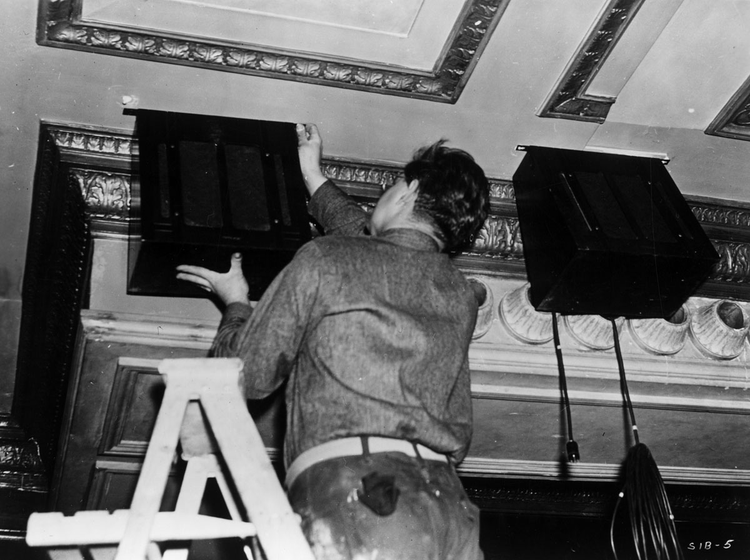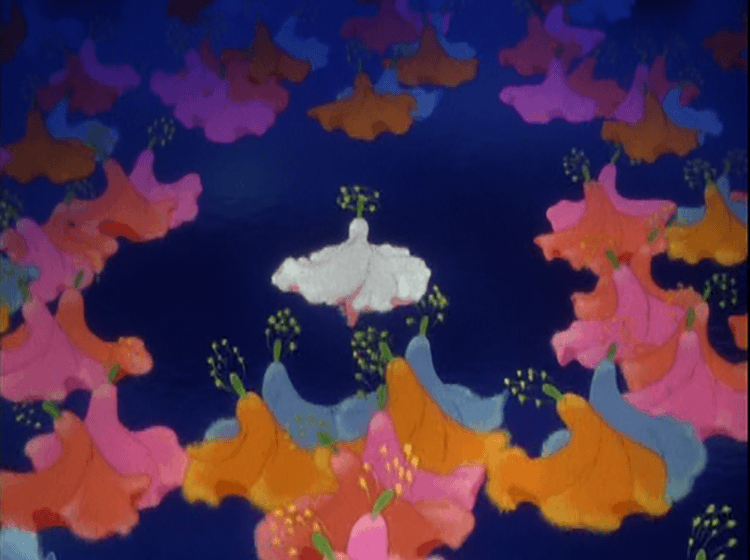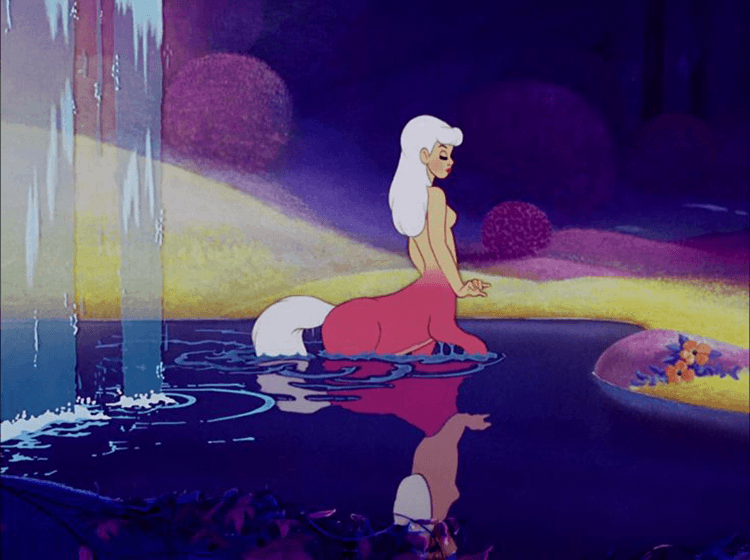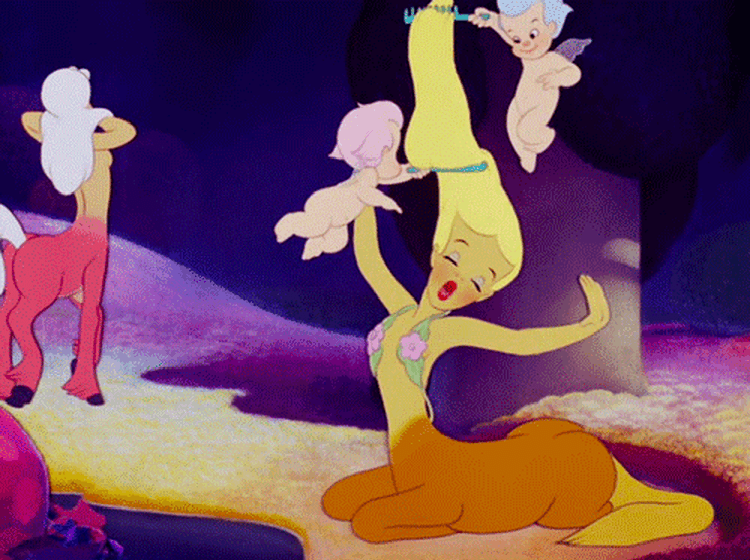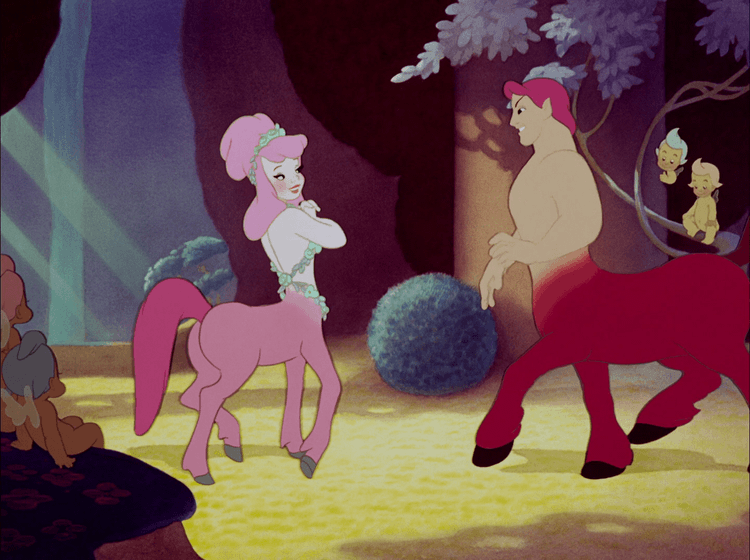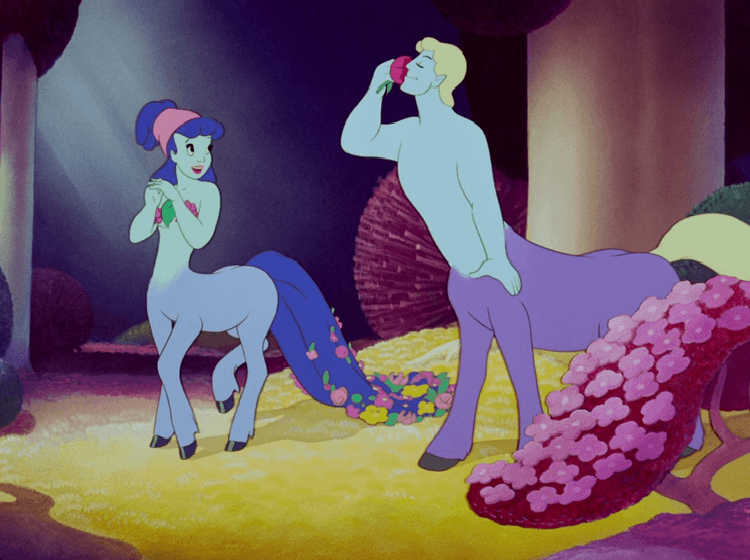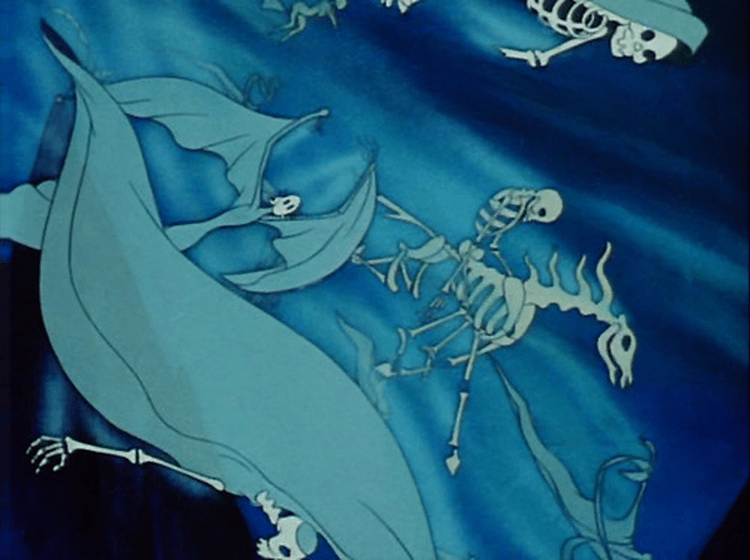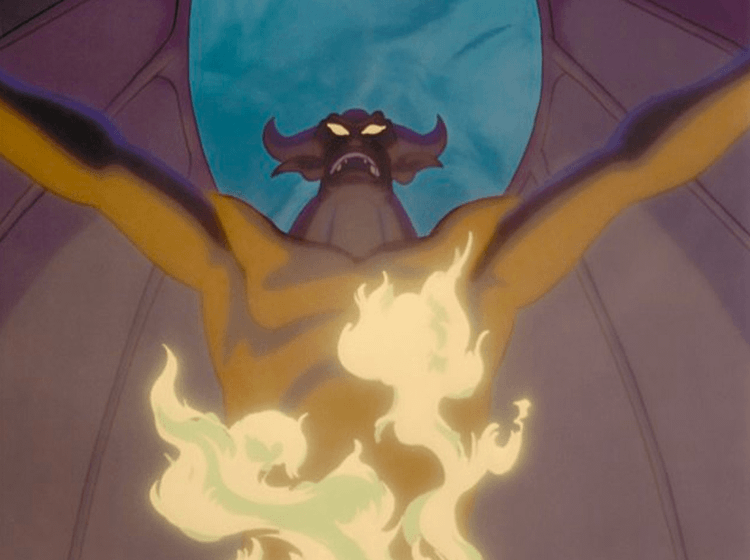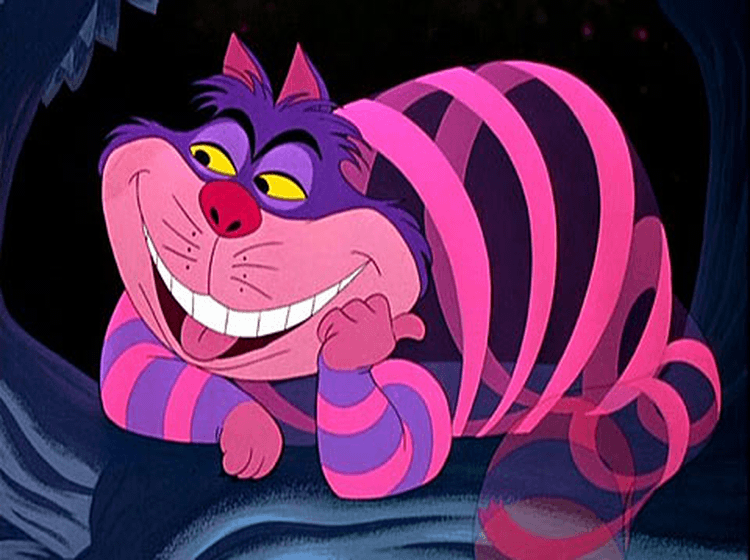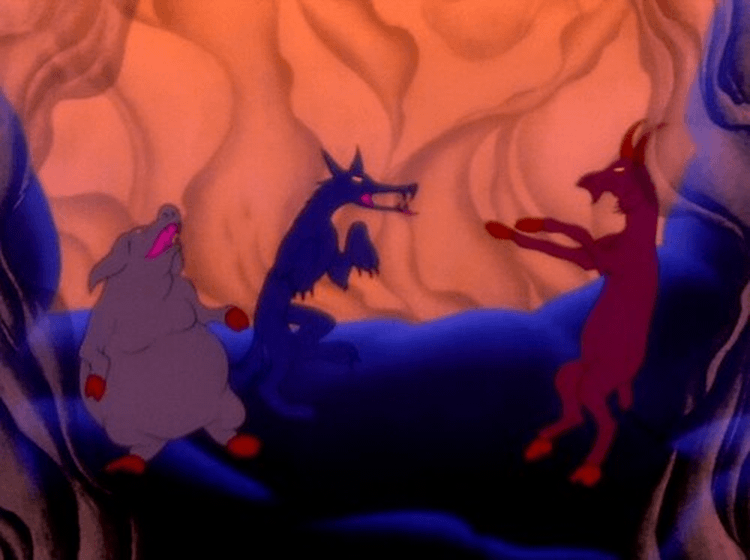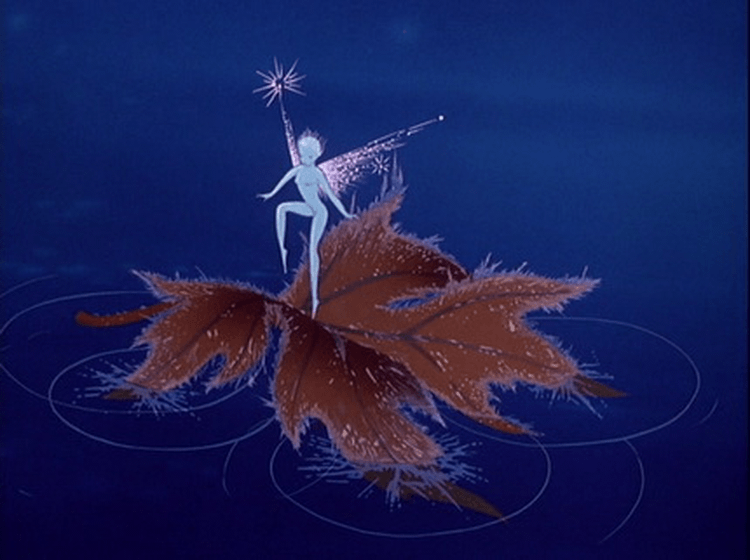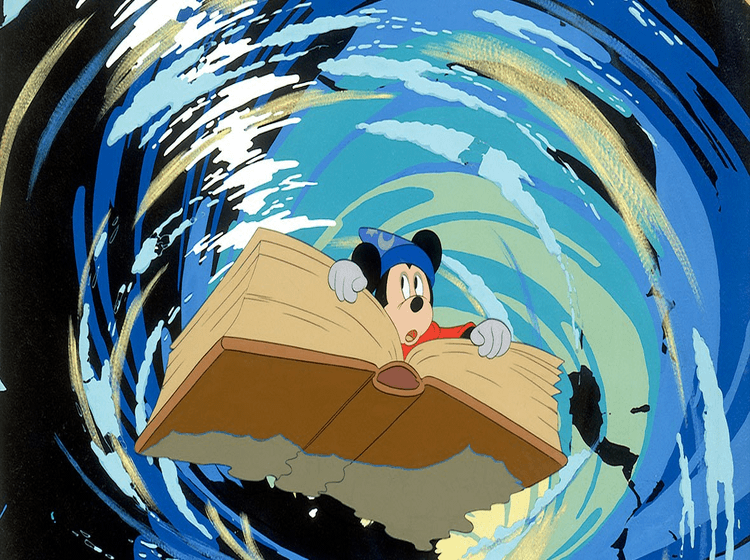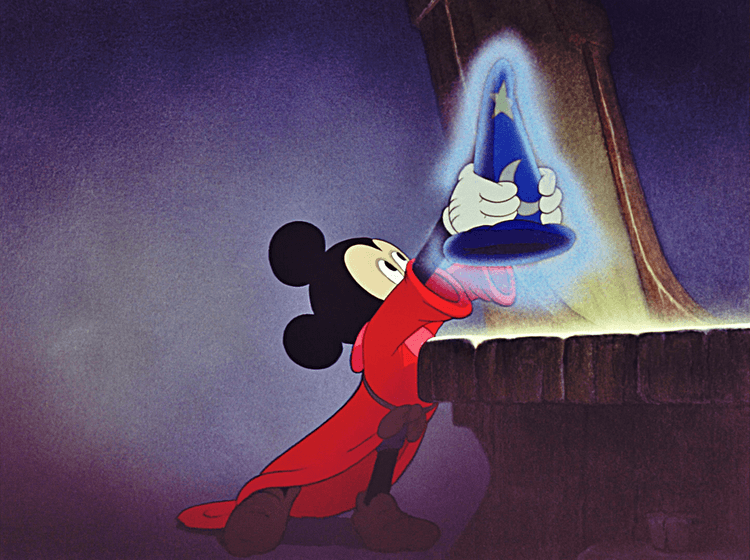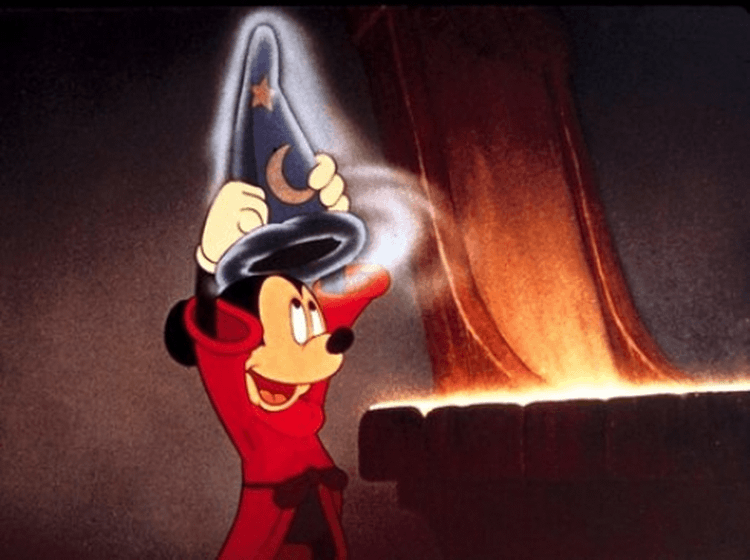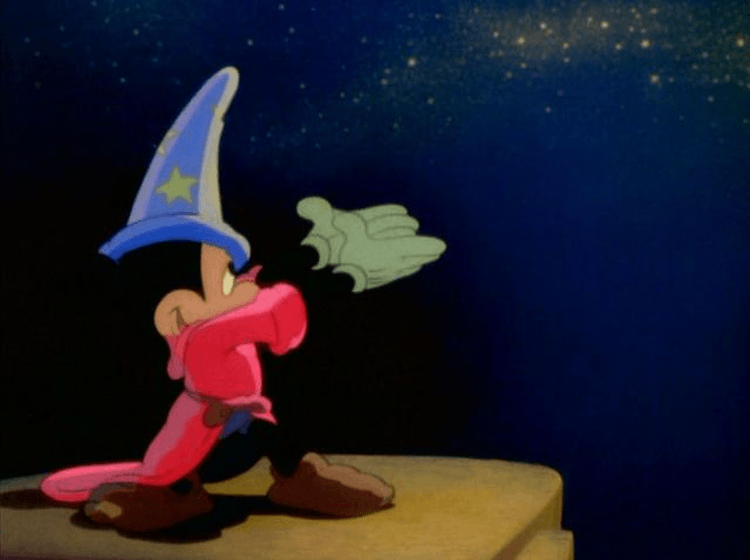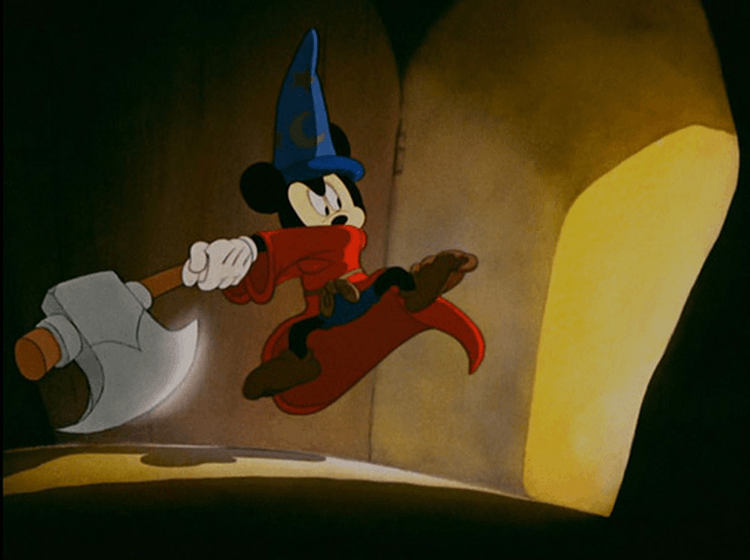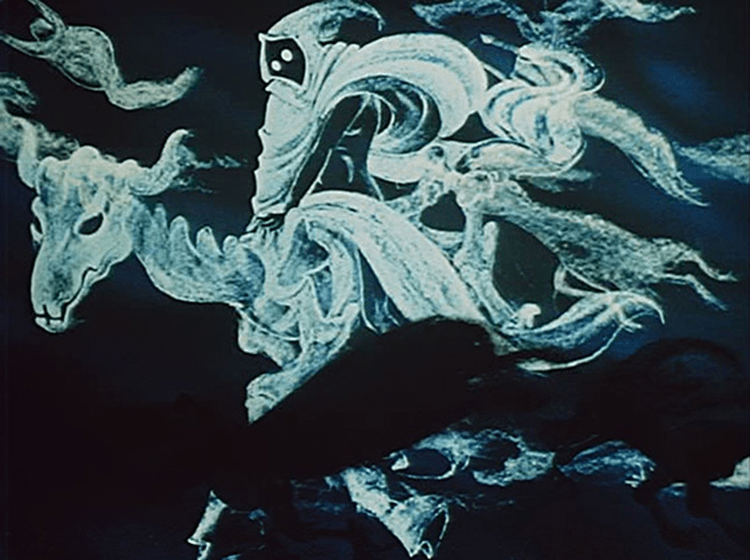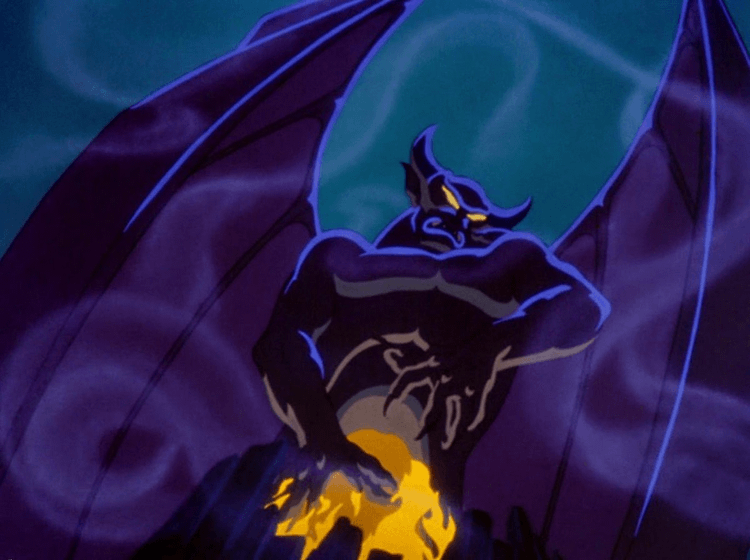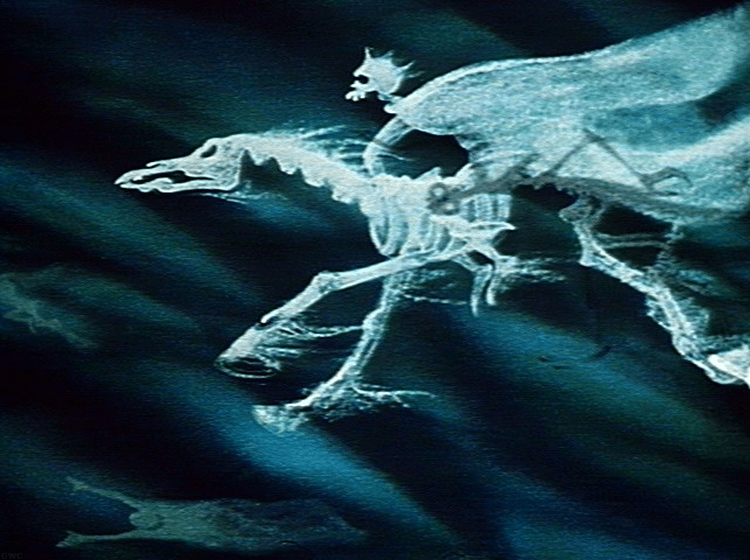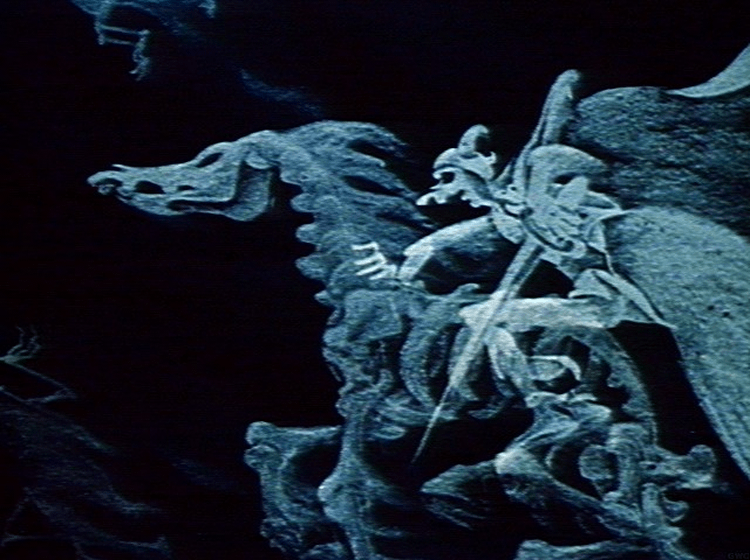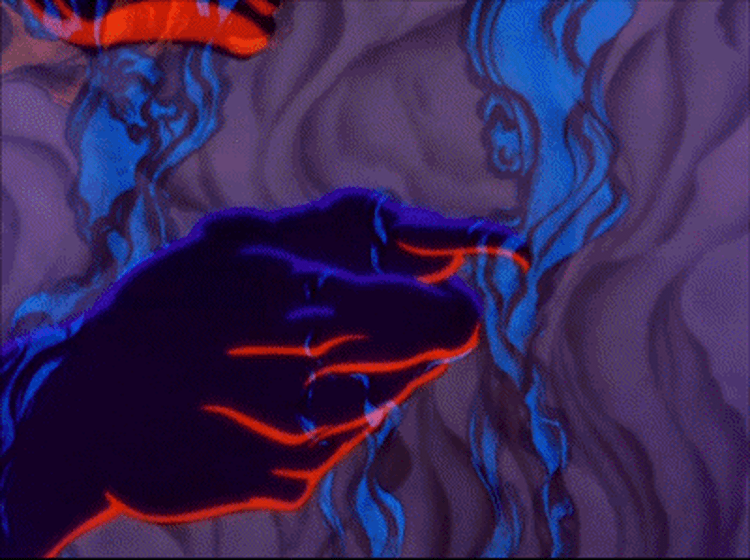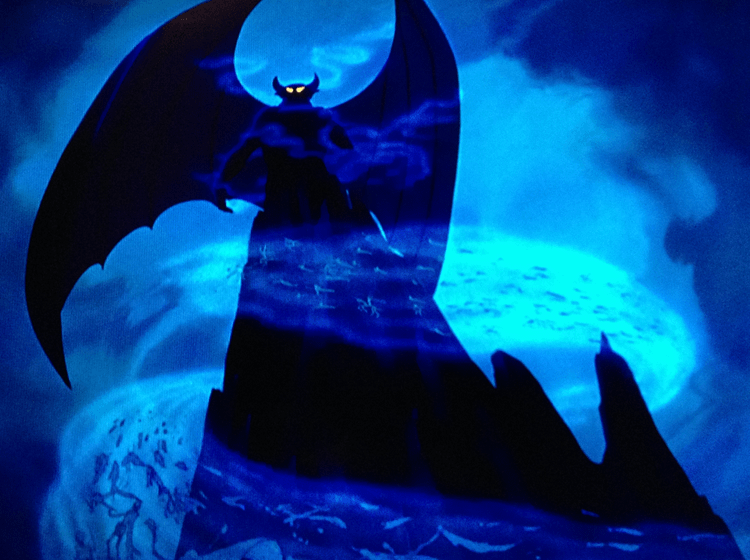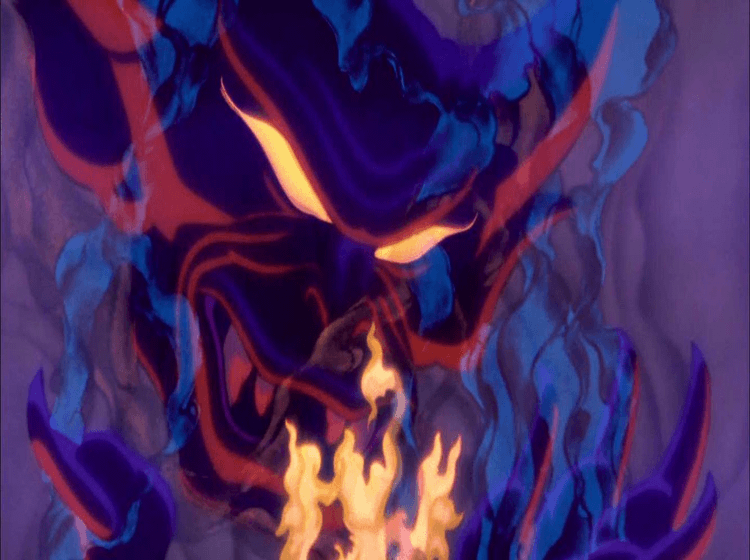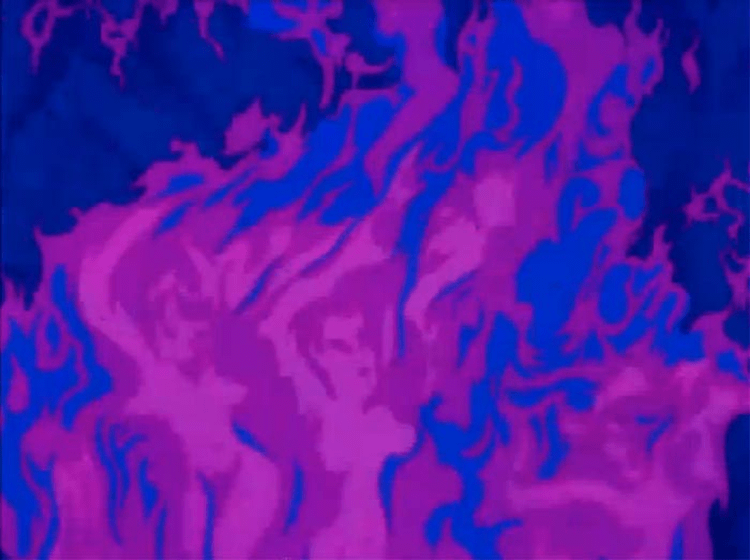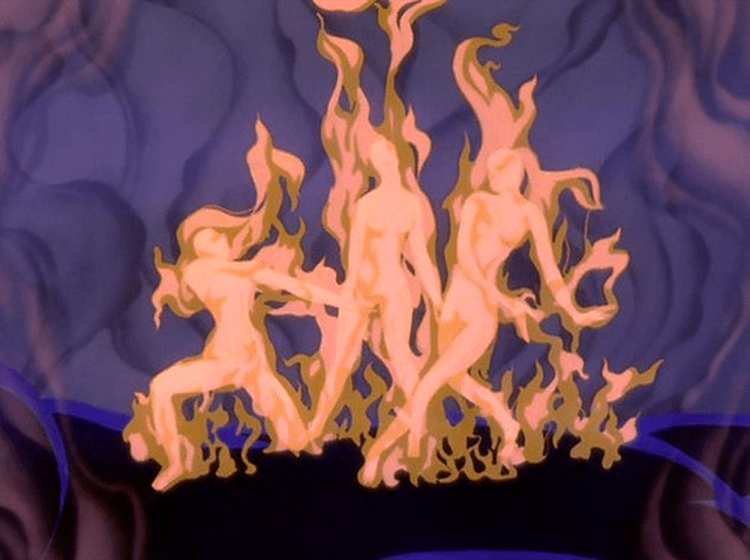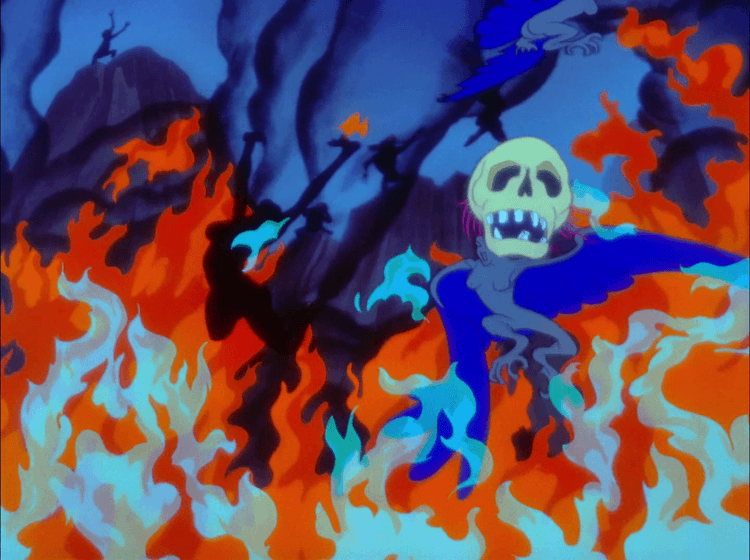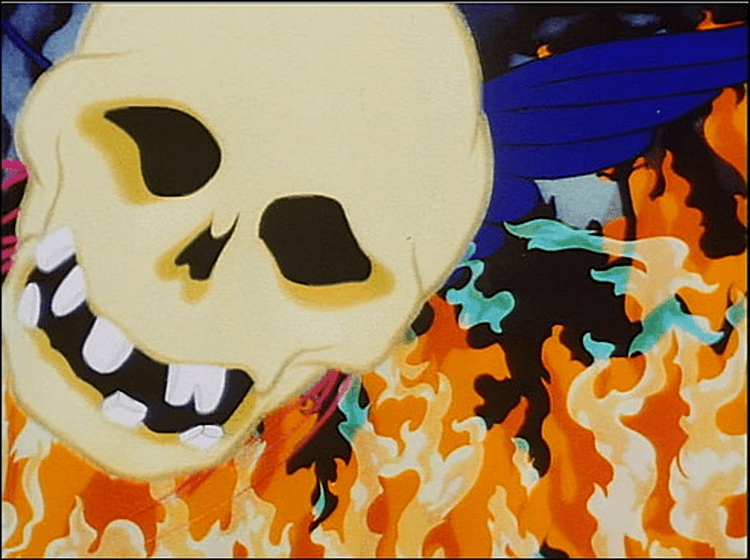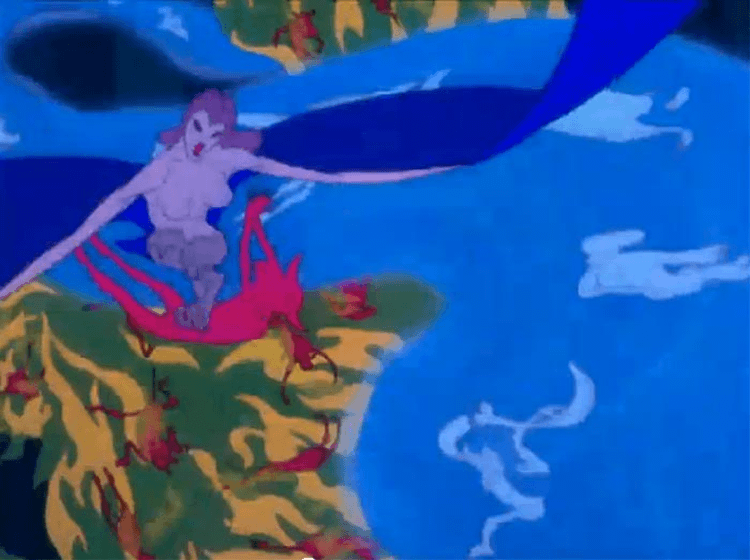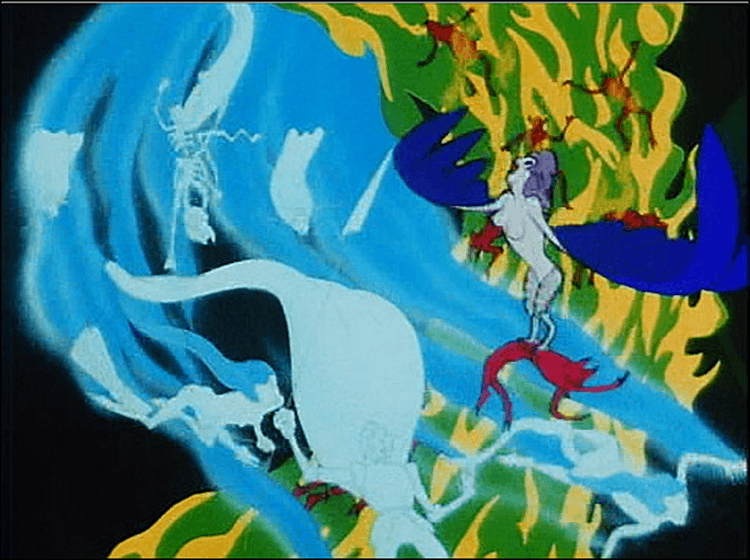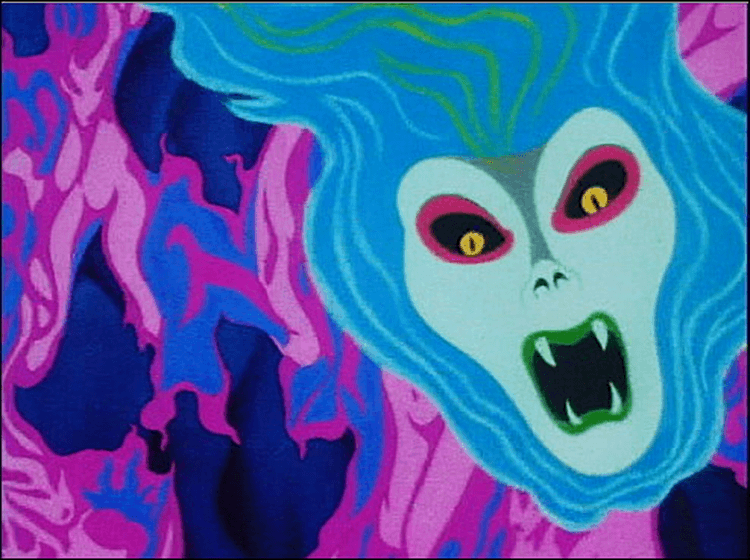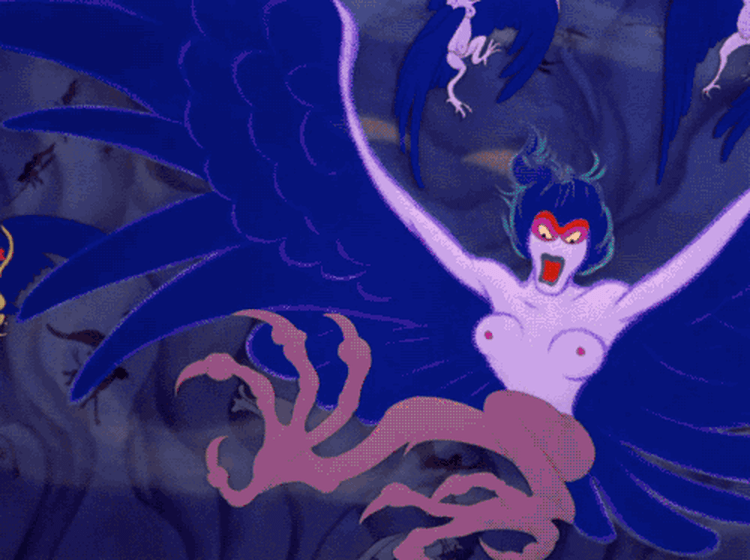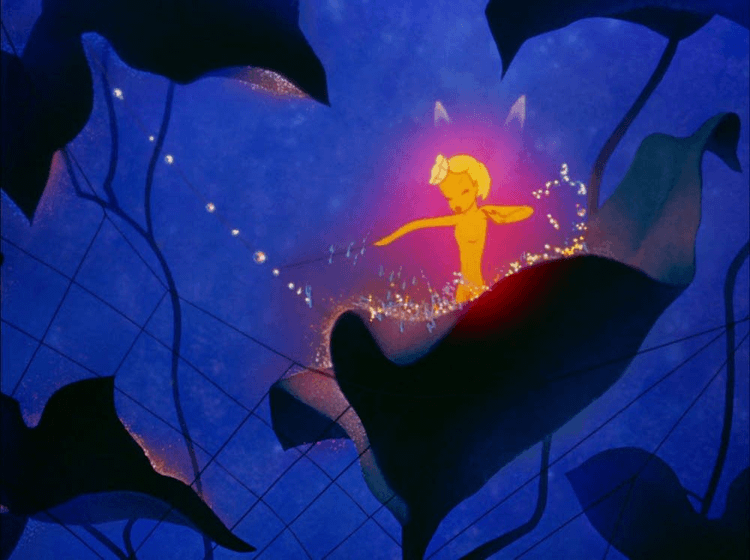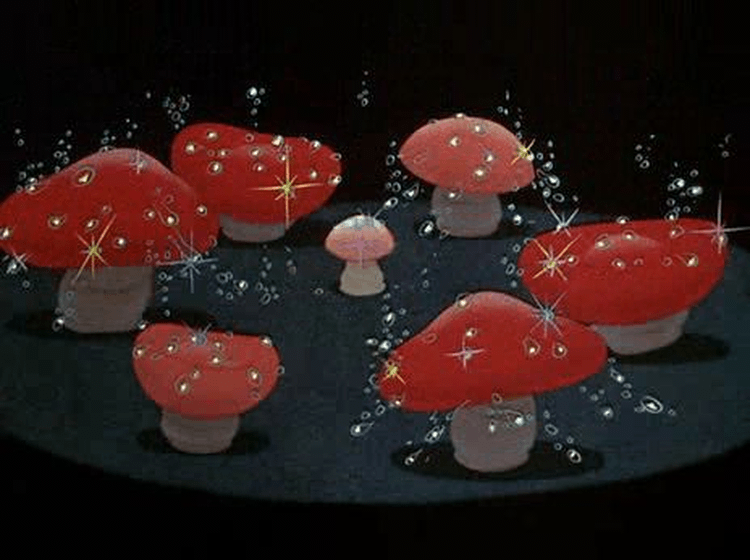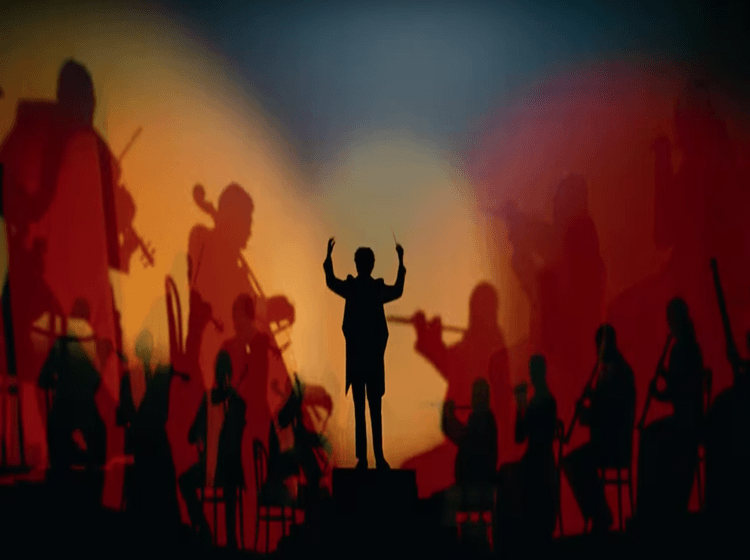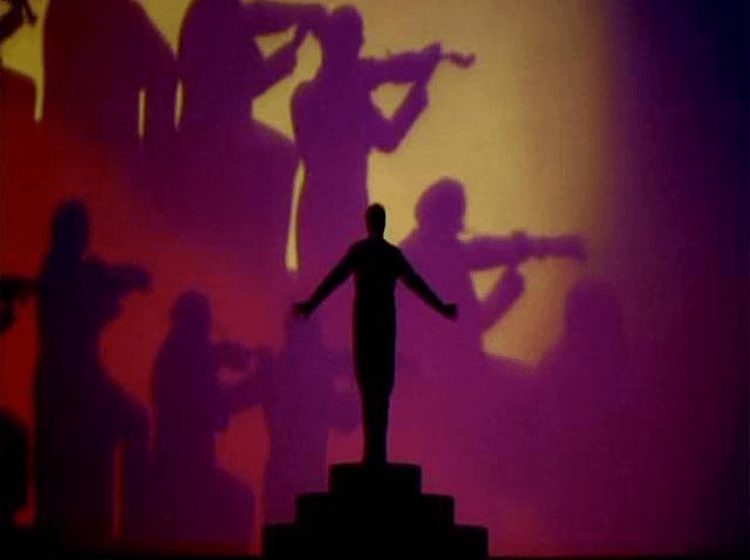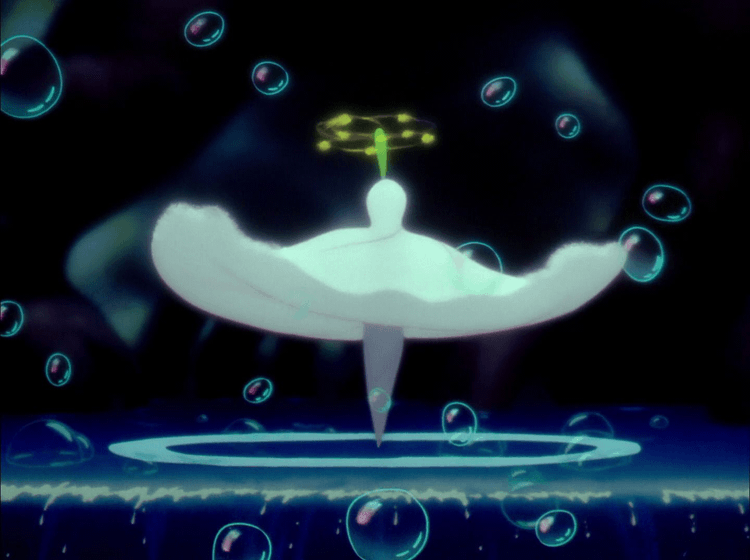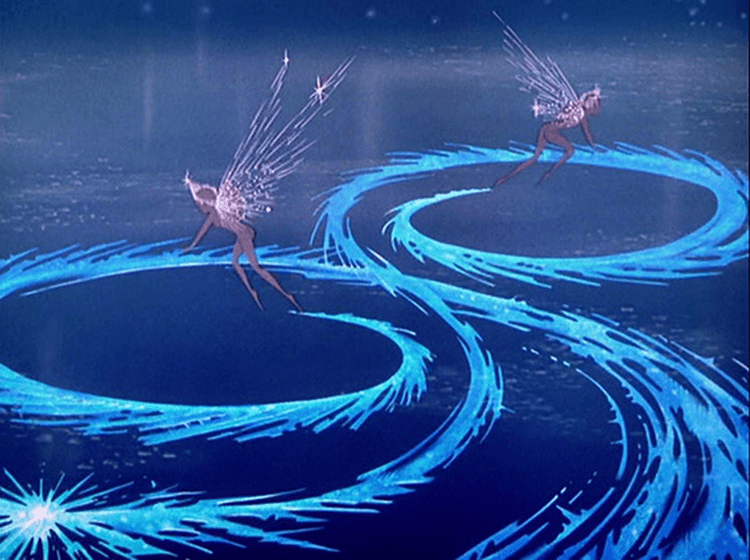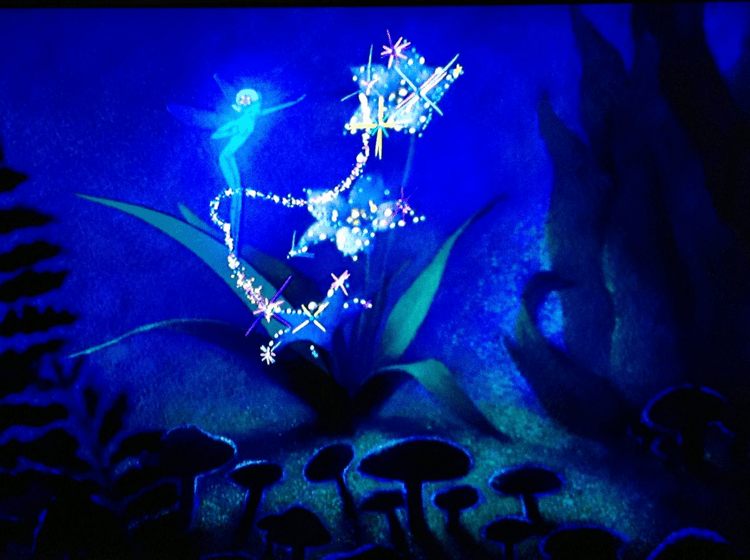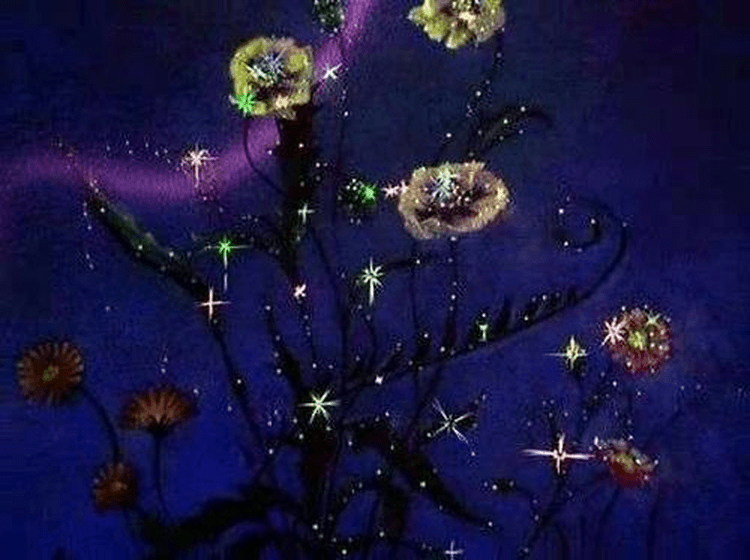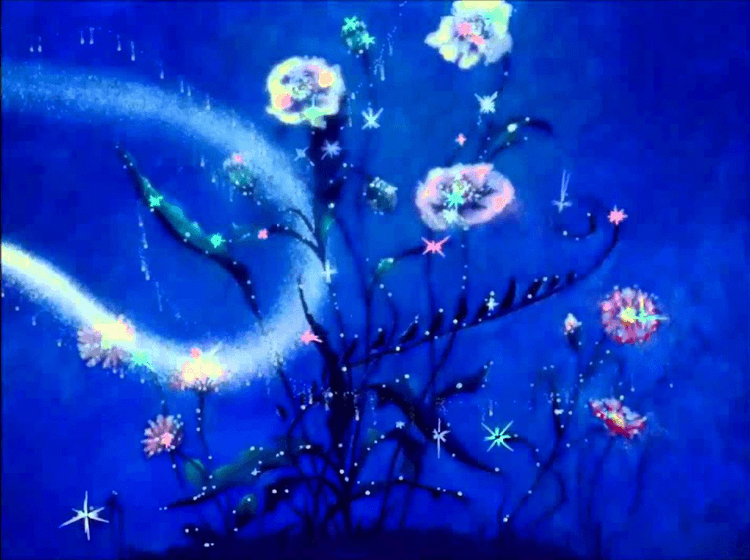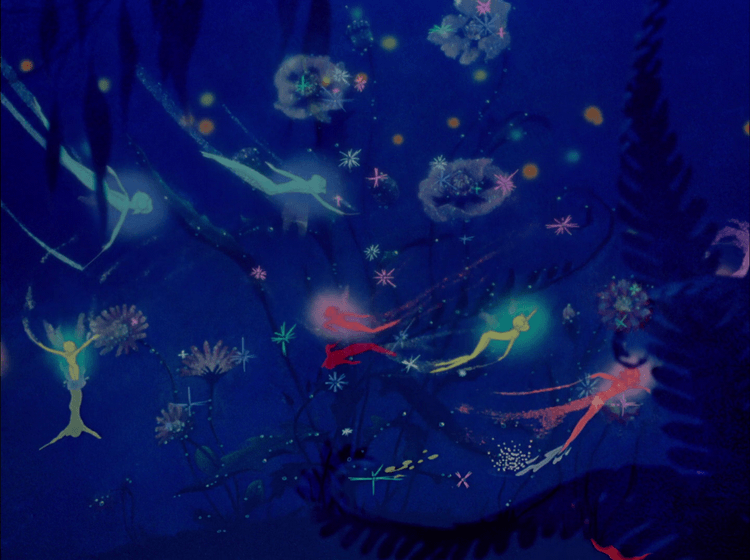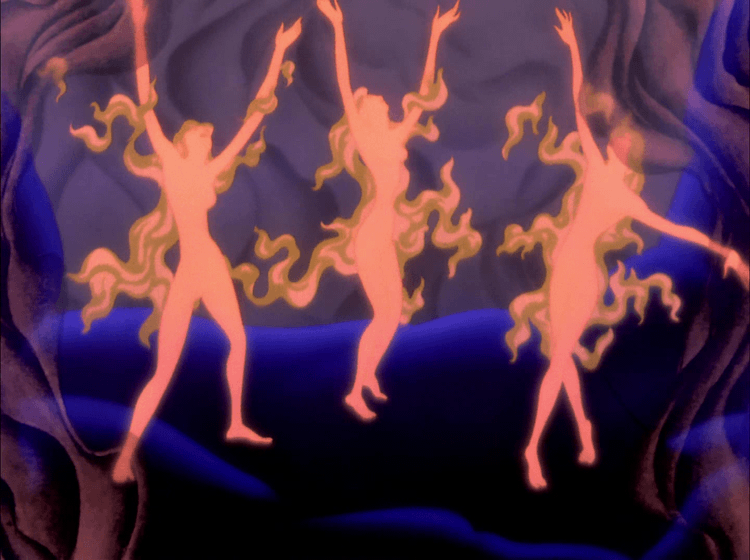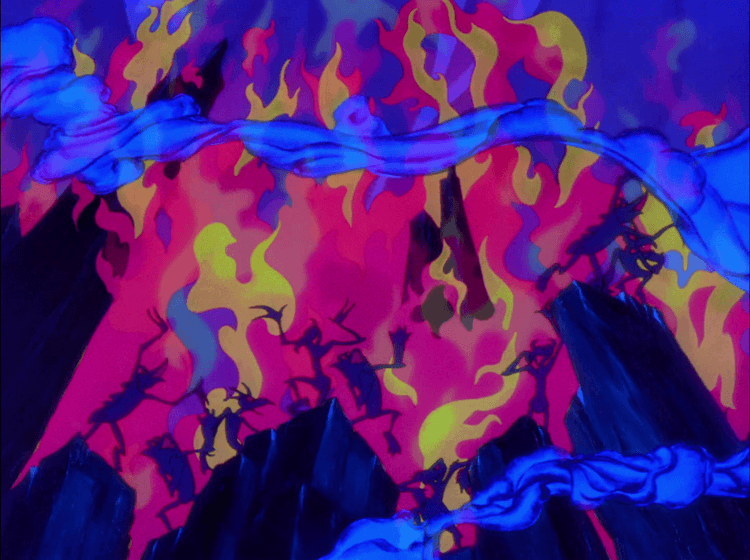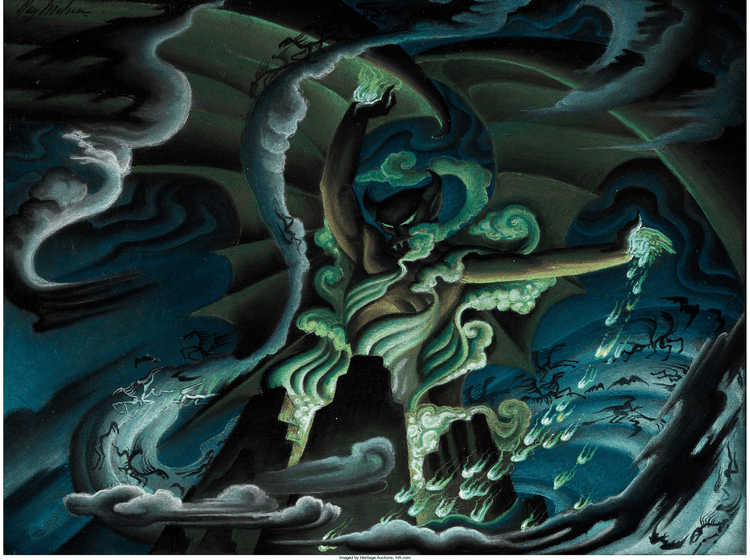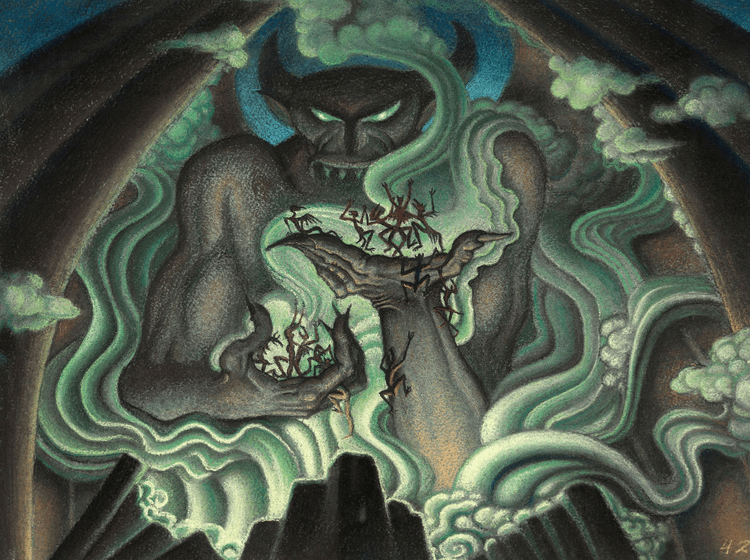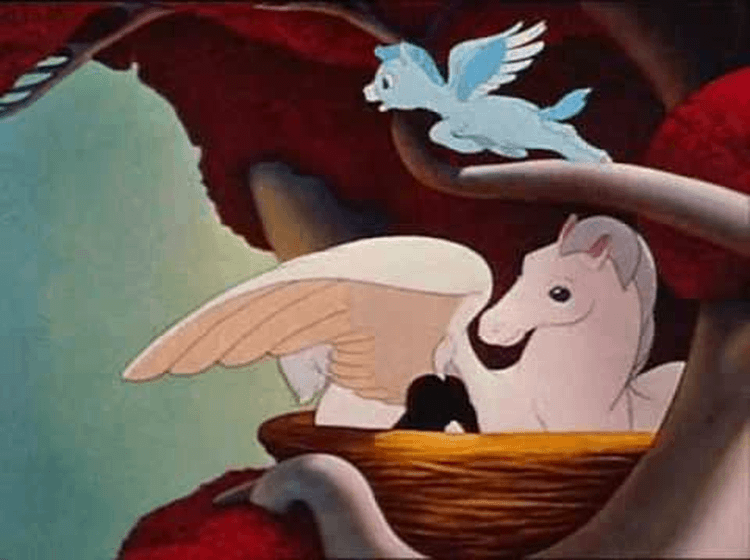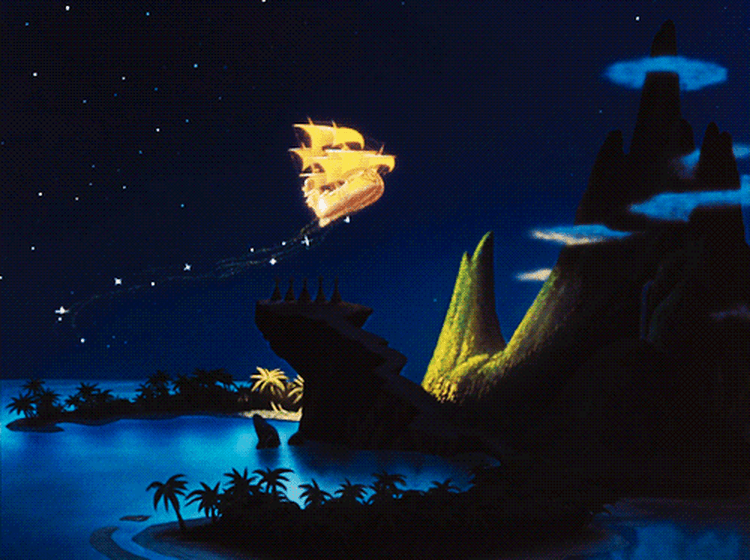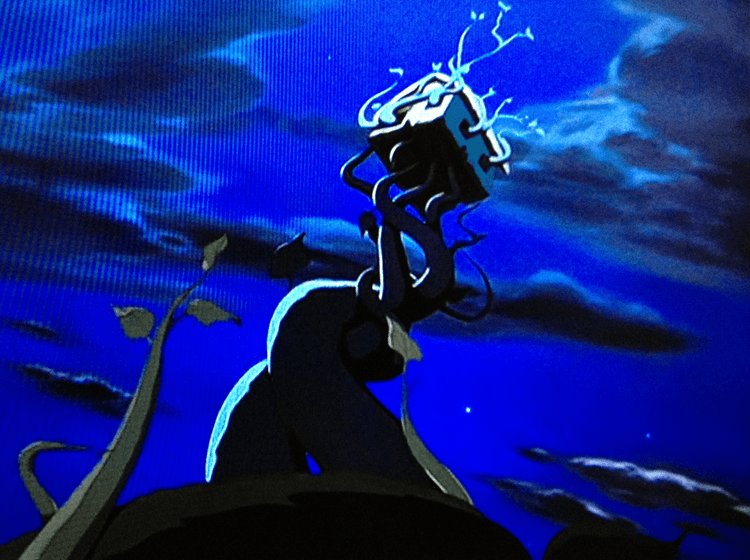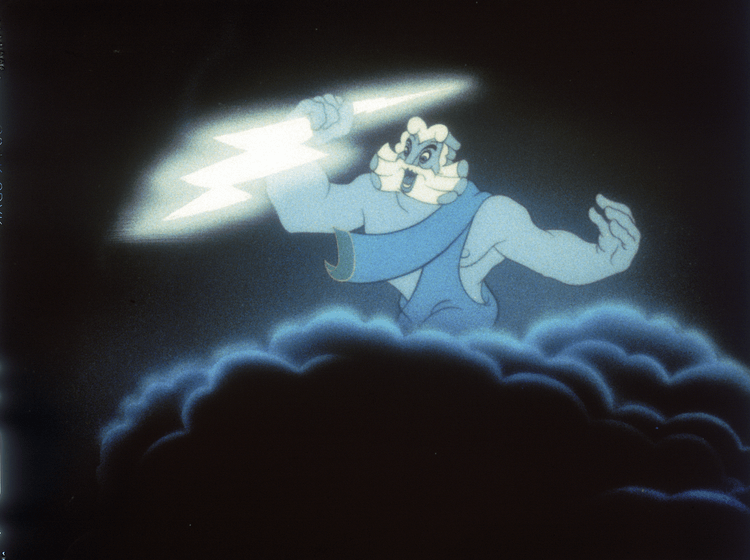Disney Psychedelics & the Occult
Was Walt Disney involved with psychedelics?
When you think of Walt Disney, what springs to mind? Childhood memories of heartwarming animated films, vivid and creative imaginative characters entwined into mesmerising storylines that linger for a lifetime. Beneath the humble, reluctant public facade, there was another side to Walt Disney. There remains a psychedelic and profound mystical gnostic aspect to this 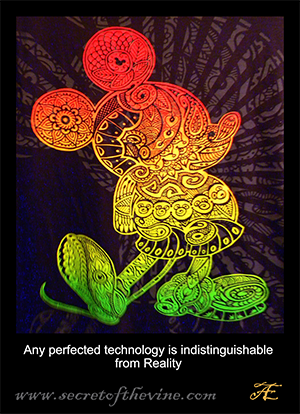 creative genius that only came to light in his productions. He never talked directly about it publicly, but he did represent it within his films in a timeless fashion.
creative genius that only came to light in his productions. He never talked directly about it publicly, but he did represent it within his films in a timeless fashion.
Disney was always in the vanguard of cinematic technology. His use of Technicolor when no one else wanted to spend the extra money on it, what he dubbed Fantasound stereophonic audio (the first ever film released in stereo), and his 1937 invention, the Multiplane Camera which gave the feature films the depth and realism befitting his timeless classics. Fantasia changed cinematography the world over forever. But it wasn’t just Fantasia that pushed the limits of our imaginations. Flowers and Trees was the first ever technicolor film. It is very much a template for many people’s first psychedelic experience in nature, the forest comes to life. Disney’s Steamboat Willie is also a landmark in the history of animation. It was the first cartoon with synchronized sound.
Looking back at some of the vivid character designs and scenes from films such as Fantasia, Dumbo, & Peter Pan it would be easy to assume that some sort of drug use or visionary plant medicine was involved. However, the deep story lines referencing sorcery, magic, witchcraft and the occult show there is a personal connection with the information that one can only derive from a serious practice of using entheogens.There has long been the speculation that members of the creative team were involved in the use of psychoactive substances, so is it such a far cry for Walt himself to have indulged as well? Publicly, the only formal admission of substance taking by anyone connected with the production of Fantasia was by animator Art Babbitt, who brought the dancing mushrooms to life in the Nutcracker Suite segment. He remarked, “I myself was addicted to Ex-Lax and Feenamint” – an over-the-counter constipation relief and a brand of chewing gum. However, it is noteworthy to remark that Art Babbitt was a an acquaintance of Aldous Huxley, spending New Years Day at Huxley’s home on Jan 1, 1942.
Psychedelics and the mystic
Let us understand the relationship of visionary plants, the occult, mysticism, spirituality, religion, witchcraft, sorcery, Paganism and mythology. All of the aforementioned practices were inspired directly by visionary plants despite what many have since devolved into – dogma, legend and rhetoric. All of the other worldly information mankind has ever collected came from the same source, the other world. Entheogens are the most direct route to this space. Whether I use them myself and tell you about it, or some ancient prophet took it and penned the Quran, or the Old Testament, the source remains the same. Anything produced based upon any writings or teachings based upon such topics therefore has its roots in the psychedelic experience. So when we look here or there and find it underlying every impactul story ever written and nearly every wonderful work of art, we can find it there, lurking in the shadows. This world is a crude acrylic painting over top of the true world, which is psychedelic in nature. What is of interest to the viewer is whether or not the artist had a direct relationship with the plants, or were they blindly copying a pattern 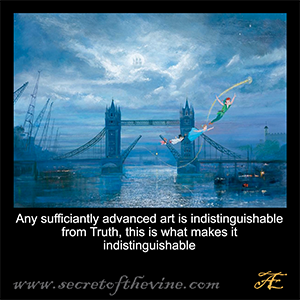 with no direct knowledge of the origin of their own inspiration. It is true there are other ways to reach this experience such as fasting, trauma, and meditation. However, the visionary plants do provide an extremely clear and simple method of establishing a relationship with this space, because they are easier on the body than repetitive trauma or prolonged continuous fasting, and therefore are more likely to be the case.
with no direct knowledge of the origin of their own inspiration. It is true there are other ways to reach this experience such as fasting, trauma, and meditation. However, the visionary plants do provide an extremely clear and simple method of establishing a relationship with this space, because they are easier on the body than repetitive trauma or prolonged continuous fasting, and therefore are more likely to be the case.
To understand whether Walt had a direct relationship with psychedelics and the occult, we first need to understand what was behind his motivations. Often regarded as the pioneer of animated cinema, he produced over 650 films or shorts in a career that spanned decades. Never content with the status quo he was one of the first to produce using Technicolour in 1932 when no one else would entertain the idea, to him it seemed to be about learning something fresh and exciting and pushing the boundaries of the interfaces that stood between his mind, and the minds of his audience. As Walt was always interested in looking ahead and trying new things it is no surprise that films like “Fantasia” are often considered ahead of their time. Is this film the result of a true visionary or by the use psychoactive visionary plants like mescaline? More importantly, how would a naturally occurring substance like Mescaline found in the peyote cactus find its way to Walt?
Walt Disney & Mescaline
In a letter by Paul Laffoley (reprinted below), an American visionary artist, Mr. Laffoley claimed that Walt Disney had indeed indulged in the use of the hallucinogenic drug mescaline. In an attempt to explain the “artistic implications of the new field of animation”, Walt arranged an interview with Josef Albers who was at the time the artistic director for Black Mountain College. Josef had turned down his initial advances unamused by the cute nature of Disney’s vision. Walt then switched his intentions to the students so that he could find a way to influence them directly to aid his animated ventures. It was during this interaction with the students that he discovered they themselves were avid users of mescaline during their summer breaks in Chihuahua, Northern Mexico. Mr. Laffoley claims this proved to be the catalyst needed for Walt to become a frequent user himself. This is, of course, one man’s recount of the events and since Mr. Laffoley has sadly passed away not an avenue that can be explored further.
Could it then be considered that it was the perception of the people watching and the era that his films were released that caused them to be synonymous with psychoactive substances like mescaline? If we take Fantasia as our prime example, the film was re-released in theaters in the 1969. The swinging sixties were awash with new experiences most of them involving a boom in psychoactive drugs, visionary plants and the alternative reality they offered. During this time flocks of new age adolescents would often get high or trip and watch Walt’s latest re-run. Imagine that in a film so clearly ahead of its time, featuring an ensemble of classical music mixed with animated interpretation, watching it whilst tripping or high would indeed make you think that the film itself was made by a well traveled psychedelic mystic artist.
There is no denying that films like “Fantasia” and the characters that Walt created were truly unique and original. At a time when animated cinema was in its infancy, he was pioneering in his approach and his story creation. Could we go further and categorically say that some of the influence behind his work was the result of substances like mescaline? Whilst there are several sources placing Mr. Disney in a place or time where mescaline use may have occurred, as well as speculation that his creative team dabbled in the use of psychoactive drugs there is nothing concrete. Unlike modern times where drug use is often captured and posted over social media for the world to see, no such option existed in Walt’s era. For now, we must be content with enjoying the films as they were intended, whether that be whilst under the influence of substances like mescaline or not, and as children or adults.
The Walt Disney and Josef Albers connection
 In the letter which is to follow, Paul Laffoley relates the background information on how Walt became aware of the creative potentials of Mescaline (Peyote) while visiting Black Mountain College in North Carolina in 1935. Walt was visiting to meet with artistic director Josef Albers.
In the letter which is to follow, Paul Laffoley relates the background information on how Walt became aware of the creative potentials of Mescaline (Peyote) while visiting Black Mountain College in North Carolina in 1935. Walt was visiting to meet with artistic director Josef Albers.
The students explained to Walt that they felt oppressed by Albers teaching techniques and took the summer vacations to Chihuahua in northern Mexico to collect Peyote buttons for their creative inspiration.
You can see by the image on the left, the students of Black Mountain College seemed to be imbued with the Disney spirit, you can almost see a scene from Snow White or Fantasia being played out on the campus. No wonder Walt wanted to inhale this creative youthful spirit and animate it. Was this all Walt inhaled from Black Mountain? According to the aforementioned letter by the late Paul Laffoley, perhaps there was much more to than heresay or rumor.
Letter from Paul Laffoley
November 20, 2008
Dear Mr. Laffoley,
I am writing to you to inquire as to whether you would be willing to tell me the story pertaining to the connections and history of Walt Disney’s connection to Josef Albers. Miles Huston told me a story that he said originated with you regarding Walt Disney and his infatuation with the Black Mountain College and the clique surrounding Josef Albers. I have been very interested in the subject matter and would love to hear what you have to say.
Thank you,
Anais
Dear Anais,
In 1933, when Black Mountain College opened in Asheville, North Carolina, its artistic director was Josef Albers (1888-1972) the last head of the Bauhaus before the Nazis closed it. The contract for Albers and his wife Anni was offered by the American architect Philip Johnson (1906-2005). By 1935 Walt Disney (1908-1966) got wind of what was up. He rushed to get an interview with Albers explaining that no one had understood so far the artistic implications of the new field of animation. When they met Albers was not amused with Disney’s vision of cute nature. The meeting ended with Albers blowing up saying, “I will not allow any American kitsch to infect the minds of ‘my’ students.”
Disney was astonished but not deterred from his mission. He sensed, however, that Albers’ “will to power” was more sexual and mature than his, which was more neurasthenic and analytic. The comparison made Disney angry. Pretending to leave, he began to question the students away from the watchful eyes of Albers, about the nature of their life at school and who their teachers were. At that moment Disney began to realize just how much he disliked the European attitude of paternalism, which he had just experienced close up. He did, however, discover the way the students “escaped” from the school in the summer. They all went to Chihuahua in Northern Mexico. There the students would eat wild peyote derived from the buttons of the mescal cactus. In its refined form it is mescaline- the hallucinatory crystalline alkaloid: C11H17NO3. The students would, of course, look forward to the summer hiatus, not realizing that the faculty was secretly fostering their use of peyote because of its antispasmodic capabilities. Most of the European faculty knew that sensitive Americans were not used to being taught by artistic tyrants like Josef Albers, Walter Gropius (1883-1969) or Adolf Hitler (1889-1945).
By 1936 Disney was taking mescaline on a regular basis and as a result his most famous work appeared: “Fantasia.” In 1940 it became a staple of American cinema, the year it was launched. While “Fantasia” appealed immediately to children, its adult understanding did not develop until the mid-60’s, years after Black Mountain College ceased to exist. What happened, of course, was that the hippie generation (the cultural grandchild of “Wander Vogels”-“The Wandering Birds”- the German youth after World War I, in a disenfranchised state) was the first group to recognize “Fantasia” as the first American “stoner movie.” What was still not understood was that the entire ensemble was also a vicious satire in the tradition of Jonathan Swift (1667-1745) or Francois-Marie Voltare (1694-1778).
The structure of “Fantasia” consists of eight pieces of fairly well known European musical compositions, spanning the years from the 18th century to the early 20th century. Disney, himself, had never natured musically as his audiences never had, thus allowing him to work his animation to all ultimate degree. In fact what he did to “The Rite of Spring” was considered by the composer Igor Stravinsky (1882-1971) to be deemed unforgivable. To these compositions Disney juxtaposed his own animations which acted as programmed literary synesthetic visuals, very much in the vein of the hallucinations one might experience from advanced and compulsive alcoholism, such as seeing “pink elephants.”
November 13, 1940 in New York City “Fantasia” began without opening credits or logos, just the master of ceremonies Deems Taylor delivering a short introduction to the film and about the conductor Leopold Stokowski (1882-1977) who was the director of the Philadelphia orchestra. It turned out that Stokowski (an English born American) became the “bridge” Disney was “unconsciously” looking for. During the meeting of Disney with Albers, Albers began to express the traditional “put down” of Americans in relation to culture meaning “Americans have no culture.” So when Disney in 1938 started his attack on Black Mountain College and its teachers he chose “The Sorcerer’s Apprentice” which is a medieval fairy tale that had been rendered into a poem by Johann Von Goethe (1749-1832) the great German poet and dramatist. Goethe called it “Der Zauber Lehrling.” From the poem the composer Paul Dukas (1865-1935) made the tale into a concert piece. Since “The Sorcerer’s Apprentice” was first, all Disney was planning to do. The story was of German origin. He first heard it played in The Hollywood Bowl and it seemed to fit the bill. Disney bought the rights to the music and actually identified completely with the story. The German sorcerer was, on the one hand, Albers, but, on the other had, he was also the superego or the father-figure of Disney. In fact the sorcerer was named “Yen Sid” (or Disney spelled backwards). Mickey Mouse was cast as “The Sorcerer’s Apprentice.” Mickey was the alter ego of Disney. In fact Disney used his own squeaky voice for the voice of Mickey. While progress on the film went well, in fact it went too well. Since the cost reached $125,000, Disney figured it would never pay if it was released as a single film. Then a surprise happened. He ran into Stokowski at “The Brown Derby.” While talking over lunch, Stokowski heard the whole sad vengeful take of the confrontation between Disney and Albers. Stokowski said “I like what you are doing, and I will conduct ‘The Sorcerer’s Apprentice’ for nothing. In fact I will put up the ante on that pompous ass, Albers, who was already to join the Nazi party just as the S.S. officials shut down the Bauhaus. He was planning to imitate the architect Ludwig Mies Van Der Rohe (1886-1969) who was pulled out of Germany by Philip Johnson, the same thing that was done for Albers.”
But then Stokowski’s mood lightened as he formed the idea that would become “Fantasia.” Even the name came from the famed conductor. “Fantasia” is an Italian word from about 1724 that means a free musical composition that dominates any programmatic implications that might be associated with it. In other words it is the inverse of programmatic music. The only artist that attempted this was Vassily Kandinsky (1866-1944) the Russian painter that tried to paint without making conscious representation. Such a task is, of course, impossible, as the symbolists demonstrated at the end of the 19th century. One of his plays (Yellow Sound) written in 1912 and based on contemporary theories of the relationship between color and music which was influenced by occultism, and therefore, what Disney wanted was the complete equivalent. This was realized in 1940 when Albers saw Disney’s “Concert Film” for the first time. And it made Albers extremely angry, because he knew Disney as Stokowski produced a product that would challenge the ideology of European “abstraction” over American “representation.” Albers did not care about the general American public, he was only interested in the reaction of his American students, which were becoming more negative to his methods of teaching, month by month. After the day sessions spent doing “abstractions” at night the students would stay up in their bunk houses drawing and painting from nature. When Albers discovered what was going on, he ordered the students back to the dining hall for more “abstract” lessons until they fell exhausted onto the floor of the refectory to sleep.
Disney for the climax of “Fantasia” chose the work of modest Mussorgsky (1839-1881) the Russian composer known as one of the “five” and that of the Franz Schubert (1797-1828) the Austrian composer. Mussorgsky’s tone poem “St. John’s Night on Bald Mountain” is seamlessly woven with Schubert’s rendition of the prayer “Ave Maria.” The two pieces form the seventh and eight aspects of “Fantasia,” and put, evil against good, dark against light, death against life. As a terrifying and dramatic celebration of evil, the black god Chernobog (Wormwood) (from Slavic mythology) awakens on top of Bald Mountain to be one model of “Batman.” It is Walpurgis Nights (from the English saint Walburga, A.D. 779 – the eve of May Day), the night witches ride to their appointed rendezvous. Chernobog summons ghosts, demons, skeletons, witches, dragons, goblins and zombies from a nearby cemetery. This is an exact reference to Albers’ attitude toward his students. Chernobog-Albers summons fire and lava in order to make his charges dance and fly around him, much to his delight, before he destroys them. During the sequence handfuls of demons are held a loft and they transformed first into naked women, then into demonic animals before being dropped into hot lava, with lustful smiles. The sequence is in reality a premonition by Disney of an event that took place at Black Mountain College in the mid 1940’s. When he was 63, Fernand Le’ger (1881-1955) wrote to Lawrence Kocher about the possibility of a teaching position. When he came for a visit, Le’ger gave lectures in French about the relation of architecture to painting, and gave a demonstration of the “ballet mecanique” film. Since he was such a big star in the cubist movement they gave him a run of the place, and the inevitable occurred. One day he decided to accompany the women into their shower room, “sketching under the guise of being an artist.” At the same time he started pinching and flirting with these naked wet women until one day they wised up to the fact that “this old geezer” was actually a sexist perv. They suddenly turned the showers on him. He left the school while declining the invitation to teach. Without warning the day light of the morning and the church bells began to diminish the power Chernobog as he went into hiding under his wings. While hooded figures with glowing candles moved in a silent procession as the chords of “Ave Maria” begin to fill the forest as the pilgrims enter a beautiful pasture just before dawn. With the first light the blue sky and the floating clouds give the audience a vision of Heaven on Earth.
I will not comment at this time on the other five set pieces that constitute “Fantasia,” except to say that at the end of “The Sorcerer’s Apprentice” which Disney expected to be his only weapon of choice against Albers, Stokowski and Mickey Mouse meet as shadows, shake hands and congratulate each other. This scene seems to make no sense in the continuity of “Fantasia.” It was to act as the finale of Disney’s efforts to get back at “Black Mountain” college until he realized that “Black Mountain” was “Bald Mountain.” And the shadow meeting was the “bridge” between fantasy and reality, so that both entities can be experienced as ontically equivalent, giving credence to the principles of prayer, meditation, and magic. Of course, Disney knew this from his previous work that this was true.
In the end, therefore, Albers left B.M.C. in 1955, one year before the school failed, to become the chairman of the design department at Yale University. Disney, however, went on to found his self-styled cultural empire free of Eurocentric pretentiousness.
Disney’s Psychedelic Pallet
Fantasia wasn’t Walt Disney’s first foray into the realm of the avant-garde. When he enjoyed his first great success in the 1930s he was cheered by everyone from Sergei Eisenstein – who considered Disney a close personal friend and said, “The epos of  Chaplin is the Paradise Lost of cinema; the epos of Disney is the Paradise Regained” – to Salvador Dalí.
Chaplin is the Paradise Lost of cinema; the epos of Disney is the Paradise Regained” – to Salvador Dalí.
While other animation artists used the same colors through their features, Disney pushed his animators to take their art to the limit. Among the creative director’s instructions were to use color psychology in the work. Disney did not stop until those techniques were perfected and gave those characters’ expressions particular traits. Walt and his artists understood that making literal use of colour wasn’t the point: they were making cartoons, not reproducing live action. Psychological use of the colour palette did a great deal to enhance the emotional impact of Disney cartoons. Nature also uses color in the same way. This is yet another of the many examples of Disney’s uncanny gift to make art imitate life.
Audiences were impressed when Dumbo reached the movie theaters in 1941. In one of the scenes Dumbo, in a drunken stupor, goes on a psychedelic journey. That sequence, one of the most iconic moments in his career, also influenced the Hippie counterculture. When he faced backlash from his producers, he explained that children would not understand the complex aspect of the scene and would only see it as an appealing moment.
Disney’s Fantasia
 Fantasia came about because of a dinner Disney had with the great conductor Leopold Stokowski. The maestro suggested a collaboration in which Mickey Mouse would bring to life a piece of classical music, to be recorded by Stokowski and the Philadelphia Orchestra: Dukas’ The Sorcerer’s Apprentice. The idea gradually mushroomed into an even more elaborate project initially called The Concert Feature. “Fantasia merely makes our other pictures look immature and suggests for the first time what the future of this medium may well turn out to be,” Walt said in a speech in 1940. “What I see way off there is too nebulous to describe. But it looks big and glittering. That’s what I like about this business, the certainty that there is something bigger and more exciting just around the bend; and the uncertainty of everything else.”
Fantasia came about because of a dinner Disney had with the great conductor Leopold Stokowski. The maestro suggested a collaboration in which Mickey Mouse would bring to life a piece of classical music, to be recorded by Stokowski and the Philadelphia Orchestra: Dukas’ The Sorcerer’s Apprentice. The idea gradually mushroomed into an even more elaborate project initially called The Concert Feature. “Fantasia merely makes our other pictures look immature and suggests for the first time what the future of this medium may well turn out to be,” Walt said in a speech in 1940. “What I see way off there is too nebulous to describe. But it looks big and glittering. That’s what I like about this business, the certainty that there is something bigger and more exciting just around the bend; and the uncertainty of everything else.”
This feature film is considered as one of the best visual works of all time. It continues to astound despite the fact that it was made in 1940. It earned a cult following among the young people because of the psychedelic, mythological, spiritual and occult visuals mixed with a classical score. He even fought with his employees to defend his vision that animation needed to be paired with massive musical scores. It was Walt that pushed for Technicolor and synchronized Fantasound stereophonic audio to be added to cartoons in the first place. He even invented the Multiplane camera to give his features the depth and dimensions to immerse the viewers visual senses. Disney was aware that his animation was a complex piece of art and that it was unlikely to grab the attention of young children. What he wanted was to create discussion among the adults by presenting a work that changed the way they thought.
The 1968 Beatles cartoon Yellow Submarine did very well with the psychedelic crowd at the box office. Sensing a new market  for Fantasia, the Disney studio re-released it in 1969 with a psychedelic poster. Fantasia was embraced as a ‘head movie’ by the counterculture amid speculation that Walt must have been on something when he produced it.
for Fantasia, the Disney studio re-released it in 1969 with a psychedelic poster. Fantasia was embraced as a ‘head movie’ by the counterculture amid speculation that Walt must have been on something when he produced it.
Even the casual observer would notice the out of this world context and landscapes in Fantasia. I noticed the psychedelic plants. From what I can recollect, I saw Morning Glory (LSA), Amanita Muscaria (Muscimol), Angel Trumpets (Scopolamine), Poppies (Opium), and what seemed to be Datura (Atropine). Given the nature of these plants and the experiences that they induce and the fact that they are paired with a number of recurring themes, Walt Disney knew exactly what he was doing. Fantasia is a classic blueprint of the entire psychedelic experience. By the entire experience I don’t mean one trip. I mean recurring incessant trips into the nether world, progressing deeper and deeper until there is an all out battle between light and dark for the soul of those who take such a journey, and beyond into the abyss.
This theme runs through most of his feature films touching on topics of fairies, sorcerers, mythology and spirituality. He even touches upon alternate models of reality and experiences that would today be called HPPD: hallucinogen persisting perception disorder, which is actually not a disorder at all for one who is ready to expand their idea of reality permanently. Yet, Walt knew this, way back then. People, psychonauts, hippies, and the psychiatrists of today still don’t know what HPPD actually is. It is a tearing of the veil between worlds, that reveals a larger eternal reality of consciousness; an infinite universe made of pure thought, and belief. Walt always had creative control over his features. There is no way he, nor anyone else could have just guessed all of the ingredients for this journey into the mind, and then guess each scenario that would unfold, predict the context as fact becomes fiction and vice versa, and then line up the sequence all in the correct order. To top it all off, Fantasia was released in theaters on Christmas day in 1941.
It is my conclusion based upon the evidence in this film alone and my own experiences (which include guiding others through this process of psychological / spiritual alchemy), that not only was Walt aware of psychedelics and their effects and what happens due to continuous use of them, but he was also personally aware of the reasons behind each level because he had undergone the process himself. Enlightenment is not really a destination as such, it is a process. Fantasia is the blueprint for this process, and all evidence suggests that this quiet spoken, mild mannered individual had on some significant level achieved enlightenment during his time here on earth. Fantasia is the cartoon equivalent of Timothy Leary’s work based upon the Tibetan Book of the Dead, called The Psychedelic Experience published in 1964. I would put money on a bet that Fantasia was one of the catalysts for all of Timothy Leary’s psychedelic publications. Obviously Timothy saw this film, and knew exactly what it represented before he published his own similar work.
Disney’s collaboration with Salvador Dalí
What might have been the ultimate Disney experiment didn’t come to fruition for half a century. In the mid-1940s, Salvador Dalí came to the studio to work on a short-subject called Destino and produced a fair amount of conceptual artwork for it.
Salvador Dalí and Walt Disney started a short film called Destino between 1945 and 1946. Together they were going to work on designs from the Surrealist artist. Although the production of Destino was interrupted 8 months later for financial reasons, the encounter and collaboration prove Disney’s interest into a deeper form of art.
For years, Dalí’s sketches (together with John Hench, creative director at The Walt Disney Company for 65 years) remained canned. The project did not resurface until 2003, however both creators maintained a friendship for several years thereafter. Almost 50 years later Walt’s nephew Roy E Disney resuscitated the project in 1999, with the help of nonagenarian artist John Hench, who had worked alongside Dalí during the original production, and created a striking short that was nominated for an Academy Award. John passed the following year.
Some point out Dalí as one of Walt’s biggest influences, which is evident in his own works such as Fantasia, Alice in Wonderland, & Dumbo. When asked about drug use Salvador Dali once remarked, ”I don’t do drugs. I am drugs.” To look upon their collaboration, I find it very reminiscent of Pink Floyd’s feature film The Wall. Personally, I cannot figure out where Walt begins and Dalí ends when I look at some of their individual works. When I watch their collaboration, I cannot tell where the psychedelic experience has not been included.
Although Salvador Dali did not admit to any use of psychedelics himself, he did experiment with altered states through, frequently doing such things as standing on his head, and waking himself suddenly and jotting down his inspirations. Surrealist artists such as Dalí considered hallucinatory drugs and altered states of consciousness integral to creating Surrealist art. They argued that since the subconscious mind by its very nature was inaccessible during regular consciousness, the only time one could capture surrealist imagery was either during the careful recollection of a dream or during an episode of otherwise altered consciousness.
Dalí and others faced persecution and ridicule from some outside the art movement, especially from art critics who simply could not grasp the Surrealists’ continued departure from the rational.
Disney’s collaboration with Aldous Huxley
Walt hired Aldous Huxley to develop a script for Alice in Wonderland – a film that was in the Disney pipeline as early as the late-1930s. Between December 1938 and April 1941, Walt held at least 11 documented meetings with various members of his staff to discuss the possibilities of making Alice in Wonderland. In 1945 the Disney Studio agreed to pay Huxley $7,500 to write the treatment for the film. They paid him $2,500 on October 18, 1945 with the balance to be paid on the delivery of the final treatment no later than January 15, 1946. Huxley delivered his 14-page treatment on November 23, 1945. The Disney Studio also took out an option for Huxley to do the final screenplay for $15,000 that would have included “all additions, changes and revisions.” The first draft of the script was delivered December 5, 1945.
It has been stated that Walt rejected Huxley’s script because he could only understand every third word, but reading the story meeting notes it is more likely that Walt just felt it didn’t capture what he wanted. Apparently, Walt did comment that the approach was “too literary” for his tastes but judging from the story meeting notes, Walt was actively excited about shaping the story. Huxley’s wife, Maria, later stated, “this was the first movie he [Huxley] liked doing”.
Unfortunately, a massive fire in 1961 destroyed more than 4,000 of Huxley’s annotated books and documents, including his involvement on the Alice project. Fortunately, the Disney Archives does have some of the story meeting notes, some memorandums, the 14-page treatment and 31 pages of the script written by Huxley.
Walt did not have any formal education, and it is said he didn’t keep the company of intellectuals. Walt was well known for his exuberant quest to discover creative like minds. Perhaps as one illustrator to another Walt found a raw symbiotic creational talent in Salvador Dali that even Huxley, one of the world’s most renowned intellectuals of the day couldn’t match with his Alice in Wonderland interpretation. It seems that a picture is truly worth a thousand words in Walt’s eyes and Walt was a man of pictures, while Huxley was a man of words.
Disney and the occult
Walt Disney was a member of the secret occult group dedicated to Gnosis and Alchemy known as the Ancient Mystical Order Rosae Crucis, AKA the Rosicrucians (AMORC). He was said to have completed all the teachings of the order. Like the Rosicrucians, the Freemasons are the secret keepers of Gnosticism and Alchemy. The Masons would primarily be the branch dedicated to materiality, in which the order attracts those Brethren who seek to network and move to the top ranks of society, while the Rosicrucians attract the more spiritualistic type people whose main goals are advancing their spirituality. Both working hat in hand to further the goals of the secret elect of the elite who decide the fate of mankind.
 Walt was a member of the Masonic Order of DeMolay. An international organization headed by the Freemasons for young men ages 12 to 21. The Order of DeMolay derives its name from Jacques DeMolay (18 March,1243 -1314), the last Grand Master of the Knights Templar. Disney was trained as young man on the tenets of Masonry in the Order of DeMolay. It is said Walt was secretly a 33rd Degree Freemason as well. The fact is that many top level Masons who live their lives in the public eye conceal their membership in the fraternity from prying and profane eyes.
Walt was a member of the Masonic Order of DeMolay. An international organization headed by the Freemasons for young men ages 12 to 21. The Order of DeMolay derives its name from Jacques DeMolay (18 March,1243 -1314), the last Grand Master of the Knights Templar. Disney was trained as young man on the tenets of Masonry in the Order of DeMolay. It is said Walt was secretly a 33rd Degree Freemason as well. The fact is that many top level Masons who live their lives in the public eye conceal their membership in the fraternity from prying and profane eyes.
The image is of Walt Disney in his DeMolay uniform participating in the Legion of Honor Conferral.
So Walt had formal training in Gnosticism, Alchemy, the Occult and Esoteric and had unrestricted access to many high ranking members. This may have been the source of some of his inspiration and imagery. I would expect that high ranking members of any occult order have all taken some type of psychedelic sacrament as an aid to their studies and practice. The information they supposedly guard is freely available through the medium of such sacraments. I expect that this is the main secret of life and reality that they keep guarded, the keys to the Kingdom so to speak.
Whatever the source may be, Walts films were rife with the occult, and not just this or that, but the entire film wrapped around knowledge of hermeticism, alchemy, spirituality and the occult. His works demonstrate the same map of the souls journey through this 3-D plane as other more ancient texts. The book of Exodus, The Wizard of Oz all echo the same knowledge with a different superficial context. In Fantasia the scene A Night on Bald Mountain echos the Egyptian and the Tibetan books of the dead, as well as the book of Revelation, which are all the exact same story, a psychedelic nightmare also known as the dark night of the soul. Walt found it so important that he kept rewrapping this dark night of the soul theme in many of his works with different characters different scripts, same story again and again.
Disney and Subliminal messages
For the casual observer many things are rife with subliminal messages. The problem with their interpretation of the significance of these messages arises when an individual believes they are seeing the Devil in everything they discover. The first thing one needs to understand, is the universe is fractal. The second thing to understand, is this reality exists also in 2-D and is rendered by the brain into a 3-D experience. The third thing to understand is that there are many models of reality that each make perfect sense when viewed alone, however, they are like an 8 track, all synchronised, all fractal, and all pieces of the whole. Is it really so surprising to find Disney’s works contained hidden dimensions not everyone could see? This is because not everyone is supposed to see it. Therein lies the genius of the masterpiece. All great masterpieces have hidden dimensions. This is what makes them timeless, like the eyes of the model on a poster seem follow you as you move through this space, the information concealed in a masterpiece reveals itself to you over the course of a lifetime if your lucidity continues to grow.
When you look at something and you see the Devil in it, or a pair of breasts, this is because your perspective is tuned to that 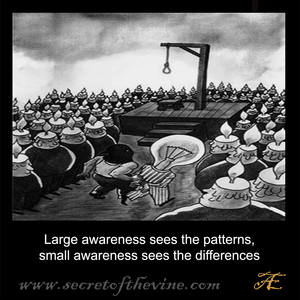 specific model, and therefore your seeing the model or context that aligns with your own perspective and morality – your reflection as it were. This is what the word profane means in scripture and other important works which refer to the profane. It takes a much larger awareness to see all of the models or facets at once, and behold the entire stone. Simply put, a hammer sees everything as a nail. Sure there are indeed hidden artifacts of Symbolism, Gnosticism, Hermeticism, Alchemy, Psychedelics, Spirituality (light & dark), and his works are very much as psychological and intellectual as they are warm and silly. Every single great work in history is multidimensional and multifaceted in these ways, and they all tell the same story. They tell the story of creation, of us, and our progress through evolution. There is indeed a real conspiracy that is the root of all others. This model of reality is holographic, and we are not experiencing the full aspect of our true nature.
specific model, and therefore your seeing the model or context that aligns with your own perspective and morality – your reflection as it were. This is what the word profane means in scripture and other important works which refer to the profane. It takes a much larger awareness to see all of the models or facets at once, and behold the entire stone. Simply put, a hammer sees everything as a nail. Sure there are indeed hidden artifacts of Symbolism, Gnosticism, Hermeticism, Alchemy, Psychedelics, Spirituality (light & dark), and his works are very much as psychological and intellectual as they are warm and silly. Every single great work in history is multidimensional and multifaceted in these ways, and they all tell the same story. They tell the story of creation, of us, and our progress through evolution. There is indeed a real conspiracy that is the root of all others. This model of reality is holographic, and we are not experiencing the full aspect of our true nature.
This is not the illuminati conspiring to keep us down, this is our makers will. Knowledge of what lies beyond is a privilege which must be earned, and statistically speaking, you are not likely entitled to much of it. Certain individuals are well informed of how things really are and why.by our makers directly. Such individuals are given license to disseminate certain knowledge in certain formats to certain targeted groups in an effort to give people what they need, when they need it. This dissemination is choreographed by those who made us. People who catch glimpses out of context are often flooded with dark egocentric ideas and Old Testament imaginings and draw premature immature conclusions based upon the only context they have been exposed to.
Just because you have not been invited to sit at that table does not mean that everyone who has is some kind of illuminati puppet of Lucifer. The world, as I mentioned earlier is a holographic rendering by the brain, an illusion. The reason this works is largely due to your participation in this illusion, and your belief. It is important that this illusion continues for most of the beings who reside here. For most, they are not entitled to anything but the Newtonian – Darwinian default human model of reality. They are not yet done being shaped and molded and cast into an eternal being – some are not ready for centuries still, and more new ones arrive every day. This place, among other things is the cradle of the Gods. I myself have risen from the children’s table to the adults table over the course of the last 20 years. It wasn’t easy and it took everything that I had to make it just as far as I have. I’m no Walt Disney or Steven King by any means.
Most of what I received is not for public consumption. It is said that those who solve the mystery, become the mystery, and this is true. For most of the people I meet, I will pretend everything is as it seems. I will not tell them directly the consequence of their actions, where they are, what they are and why, what I know or where I have been. Rather I try to be more of an example, or reference an appropriate analogy, fable or allegory that describes the solution to their particular dilemma. Disney was doing  the same thing, but on a world wide scale. Everyone who has connected with the deepest mysteries and our makers will act accordingly because of the reasons I set out earlier. Rather than weave yet another mystery or riddle for you to solve, I solve the first few for you. Anyone with enough persistence and context can solve a riddle.
the same thing, but on a world wide scale. Everyone who has connected with the deepest mysteries and our makers will act accordingly because of the reasons I set out earlier. Rather than weave yet another mystery or riddle for you to solve, I solve the first few for you. Anyone with enough persistence and context can solve a riddle.
It takes a genuine master to create such master works and puzzles. As you do your own research and connect the dots, be sure you are connecting them in such a way that makes a beautiful model of eternity leaving no stone unturned, and you will see the truth of who Disney really was and discover the common subliminal denominators that he wove through all of his productions. Kindness, honesty, belief, curiosity, perseverance, connection, and movement – his 7 dwarfs. Disney created his works not just for children, but teens, young adults, seekers and would be masters alike, each finding something at their level. To label this layering of information as subliminal messages, or subversive is really the wrong perspective. A Disney feature film was intended to be a wondrous treasure hunt. There is nothing in there you were not supposed to find when you were ready to find it. All of Hollywood is in on the gag, and the music your favorite bands compose is done in the same fashion. Sure the “elite” have the inside track, however, there is only your lack of imagination preventing you from becoming an elite thinker.
The Conspiracy
Bernard of Chartres used to say that we are like dwarves perched on the shoulders of giants, and thus we are able to see more and farther than the latter. And this is not at all because of the acuteness of our sight or the stature of our body, but because we are carried aloft and elevated by the magnitude of the giants.
There are those who seek knowledge for the sake of knowledge; that is CURIOSITY. There are those who seek knowledge to be known by others; that is VANITY. There are those who seek knowledge in order to serve; that is LOVE – Bernard of Chartres
Those who have studied Hermetic law in any form such as Disney had – *Gnosticism, Freemasonry, high levels of many religions) are bound by certain rules when it comes to teaching what they know. On one hand, one Hermetic principle states that the acquisition of knowledge solely for the sake of gathering it is vanity, a type of narcissism. One must teach that which they have collected. On the other hand, one must teach according to the Hermetic principles that describe how this is to be done. I will offer some quotes about this procedure, some of the same quotes most masters have read and honored over the millenia.
The Kybalion – These men have never sought popular approval, nor numbers of followers. They are indifferent to these things,  for they know how few there are in each generation who are ready for the truth, or who would recognize it if it were presented to them. They reserve the “strong meat for men,” while others furnish the “milk for babes.” They reserve their pearls of wisdom for the few elect, who recognize their value and who wear them in their crowns, instead of casting them before the materialistic vulgar swine, who would trample them in the mud and mix them with their disgusting mental food. But still these men have never forgotten or overlooked the original teachings of Hermes, regarding the passing on of the words of truth to those ready to receive it, which teaching is stated in The Kybalion as follows: “Where fall the footsteps of the Master, the ears of those ready for his Teaching open wide.” And again: “When the ears of the student are ready to hear, then cometh the lips to fill them with wisdom.”
for they know how few there are in each generation who are ready for the truth, or who would recognize it if it were presented to them. They reserve the “strong meat for men,” while others furnish the “milk for babes.” They reserve their pearls of wisdom for the few elect, who recognize their value and who wear them in their crowns, instead of casting them before the materialistic vulgar swine, who would trample them in the mud and mix them with their disgusting mental food. But still these men have never forgotten or overlooked the original teachings of Hermes, regarding the passing on of the words of truth to those ready to receive it, which teaching is stated in The Kybalion as follows: “Where fall the footsteps of the Master, the ears of those ready for his Teaching open wide.” And again: “When the ears of the student are ready to hear, then cometh the lips to fill them with wisdom.”
Quran 3:7 – It is He who has sent down to you, the Book; in it are verses [that are] precise (literal) – they are the foundation of the Book – and others unspecific (allegory). As for those in whose hearts is deviation [from truth], they will follow (take literally) that of it which is unspecific (allegory), seeking discord and seeking an interpretation [suitable to them]. And no one knows its [true] interpretation except God . But those firm in knowledge say, “We believe in it. All [of it] is from our Lord.” And no one will be reminded except those of understanding.
This understanding is the Hermetic principle of learning and teaching gnosis that underpins the story of Jack and the Beanstalk. Jack climbed a vine (studied sacred gnostic / hermetic texts – Ayahuasca?) to steal the golden goose from a place above the clouds (the heavens) from a family of giants (Gods) and bring it back to earth for his own personal gain. Knowledge for the sake of vanity. This story is an adaptation of the ancient Greek myth, Prometheus as well as the biblical story of Babylon. It’s probably even the inspiration of Jack and Jill as well. I could keep listing many examples. All through human history this warning has been etched into the psyche of man. Few there are who understand it. Perhaps you now understand it as well, or maybe you think I am illuminati too. Walt Disney had a connection to these giants, and an understanding of how to disseminate gnosis. The only conspiracy in the work of Walt and other master’s of the arts is merely in respect of the readiness of the observer.
This principle is not just a principle, it is Law. This doesn’t just apply to Hollywood productions or Top 40 albums, this applies to any and every method of obtaining gnosis and disseminating it. I had a first hand experience with the giant. Long ago. I have been in and out of alternate realities on many occasions, and sometimes I stay for a while, even months. I have discovered a number of methods of entering this alternate dimension, and everything was wonderful there for me. I discovered a much simpler method which did not take very long, and did not last for months at a time. I had discovered the mushroom. Eventually I  began to bring other people into this realm and teach them about the magic that lived within it. We met some trees, saw some aliens, connected with everything and each other. It was wonderful. We did more and more until it was like our second home. When we were here, we hurried and bustled like little mice preparing for our next adventure in Neverland. One evening, Mother came to our home. Not normal mother, but Mother.
began to bring other people into this realm and teach them about the magic that lived within it. We met some trees, saw some aliens, connected with everything and each other. It was wonderful. We did more and more until it was like our second home. When we were here, we hurried and bustled like little mice preparing for our next adventure in Neverland. One evening, Mother came to our home. Not normal mother, but Mother.
As it turns out, she had been well aware of our adventures and travels throughout her realm. When I say she came to our home, I don’t mean some persistent inner voice, or a colorful spekter dancing through the dimensions beckoning us to come a little further into the rainbow. I mean flesh and blood with a swarm of angry fireflies (pixies?) for hair. She was as angry as she was beautiful.. terrifyingly so. She bellowed at me like a piercing thunder crack, who did I think I was, and that these are HER children and SHE decides what they know, if they know and when they know and that was final. My heart was beating a marathon as she asked me to confirm I understood. I gasped that I did. As sudden as that, she relented, and the menacing pixies became mellow and playful again and danced through the air as she gave me a royal gesture and told me to go prepare the shisha in the kitchen as she turned her loving attention to her children and calmed them while I did that.
When I returned, she told me to roll a joint. I rolled a perfect joint, set the coal on the shisha and gave her the joint. She reclined as we sat in a circle on the floor beside her around the persian silk rug. With an elegant gesture, she took the wand of the shisha, took a long draft of smoke and said ask me anything as her eyes flickered like brilliant sapphires at me as she smiled and exhaled, all in one fluid motion. We sat around our magic carpet like little wide eyed Aladdins and asked her everything we could fathom for about 3 hours as we shared the shisha. At one point as I gazed at her she parted reality like it was some kind of smoke and I could see through the dimension and gaze upon her directly. We all had a wonderful conversation, the intensity never left the air but the hostility was gone entirely, as was the fear.
When she was ready to leave she looked at us sternly and said, you two may return as you like, but when you do, do not ever bring this one again, she is too young (she was only 200 years old). I nodded profusely as I took one last gaze at her and she was gone. Ever since, she attends each of my ceremonies and interacts to whatever degree she is willing, depending upon the participants. Sometimes she sits with us as she did that first time, other times she is a voice, other times she is a tree or a plant or the wind. I have learned a great many things from her over the years since that day. She asked me to write about Them. She never said what. I thought to myself, someone needs to write these rules out and put them somewhere other seekers can find them so they don’t need to find themselves in the same situation with their pants around their ankles so to speak.
This encounter is what inspired my work. This writing that I have done here is not in the typical gnostic prose, no hidden riddles, just certain omitted topics and details. I’m not sure why I have been allowed to say as much as I have in my public writing. Perhaps she thought it was time. She did remark a little while ago that my writing was ok, and it was helping. Walt Disney on the other hand, created masterful enigmas in the original classic gnostic style, some of which could take a lifetime to fully interpret. I have no doubt that Walt knew this omnipotent Lady personally. She did confirm that the people who made the movies also knew her, which was why they were creating the works that they were, they were in a similar partnership. As for the source of the conspiracy, this is Mother’s house, and her rules apply, as it has always been since the beginning. From what I understand, we exist within her imagination, each of us a character in her ongoing Universal cosmic production. It doesn’t really matter specifically what people believe, as long as they become the best version of themselves with the tools they are provided with. It’s not so important whether you believe in your creator, for it exists independently of any of our imaginations. What does matter is whether your creator still believes in you. Rule number one of Flight club, there is no flight club.
Disney and Quantum Mechanics
In this video, it seems to me that Walt Disney was describing Quantum physical aspects of reality before there were quantum physicists. It is rumored that he was into peyote for a period of his life, and a well known fact that he was friends with Salvador Dalí and collaborated with him as well as Aldous Huxley a little.
Regardless of where Walt divined his information from, Rosicrucians, Freemasons, or psychedelics or other altered states, there is no doubt he has a very good understanding of it, to the point of where he can create practical applications of Gnosticism and convert such wisdom into an empire.
After listening to this video, I was inspired to add subtitles with some of my thoughts on the subject. It is said that Walt could not suffer the company of intellectuals, but as I researched into the depths of his works, I find it hard to believe that he was not a certified genius in his own right. Perhaps he was too busy creating practical applications of his knowledge to sit around and puff his pipe and speculate about what might be.
In Conclusion
In the beginning of this article I wanted to establish Walt Disney’s motives in order to determine what he understood verses what he inherited so we could interpret his works accurately from the master’s perspective.
Some quotes by Walt Disney are as follows; “When you believe in a thing, believe in it all the way, implicitly and unquestionable”, “First, think. Second, dream. Third, believe. And finally, dare”, “Laughter is timeless, imagination has no age, dreams are forever”. He was a believer in mankind, and that educating the children was the path for society to become better with each generation. He certainly went about it his own specific way, and influenced everyone who ever saw anything he did, with his art, his technology, his spirit, and his method of teaching. First and foremost, Walt was a fantastic purveyor of Make – 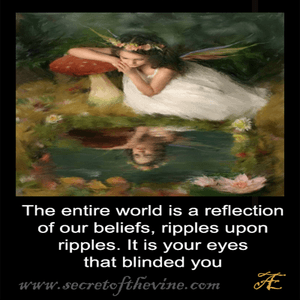 Believe. But, Make – Believe, not as a noun, but as a verb. He wanted to make you believe, in magic, spirit, kindness, purpose, light over darkness, education, knowledge, yourself and each other.
Believe. But, Make – Believe, not as a noun, but as a verb. He wanted to make you believe, in magic, spirit, kindness, purpose, light over darkness, education, knowledge, yourself and each other.
Was he using visionary plants to create his masterpieces, or were his images and technology indirectly inspired by psychedelic sages and prophets he studied from a strictly non-hallucinatory perspective? We will never know for sure. What I do know for sure, is on a number of occasions that I used visionary plants such as the mushrooms Walt had depicted in his films I saw Disney characters all around me. I saw Donald Duck in the tree, the entire tree was Donald. Another tree right beside it was Mickey Mouse. There were three trees when viewed from the same angle in which I was standing on my boat that formed a giant fish jumping out of the river onto the shore. This made me wonder, what came first, Disney, or the cartoons, and perhaps Disney took mushrooms and just copied what he saw.
I was with a witness who was not in a mushroom trip who also saw the Donald Duck and Mickey Mouse trees clear as day after I pointed them out. It was she who noticed the trees that formed the fish jumping out of the river and pointed it out to me. Strangely enough, this phenomenon remained the way it was until I left the neighbourhood. From any other perspective, no one would have seen anything out of the ordinary. This tells me that the Disney phenomenon was just for us alone. If you do a search and look for Disney and drugs, you will find that, racism, sex, illuminati, Freemasons, subliminal messages, communism, subversion and conspiracy can all be found if that is the perspective in which you find yourself standing. Seems the trick to discovering what Disney was really about is to find yourself in the correct perspective. I have worked with many people in the psychedelic process from the first trip down the rabbit hole through the dark night of the soul on Bald Mountain phase. On more than one occasion the participants reported Disney like realms opening up to them such as scenes similar to Peter Pan, the Lion King and Narnia. These days, I’m inclined to believe Disney is still at work somewhere in the heavens painting the canvas of alternate realities as a welcome becon to those of us who muster the curiosity and belief to find that secret garden through the use of visionary plants.
